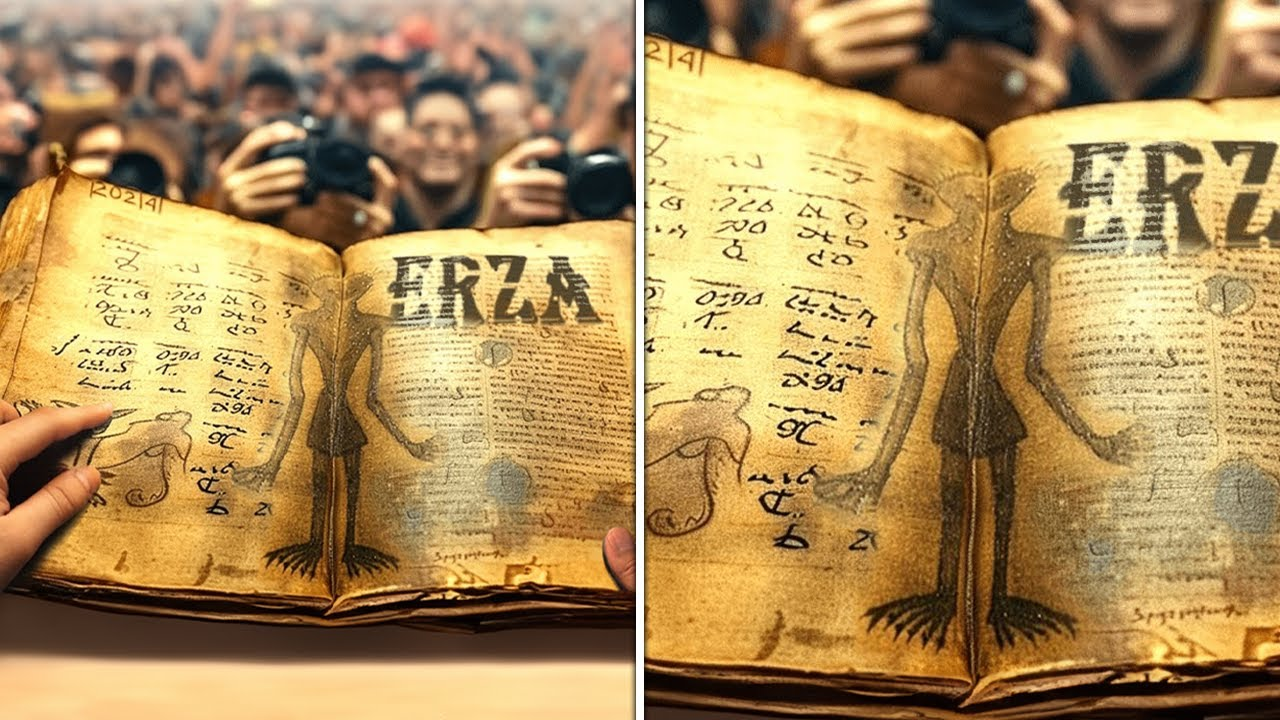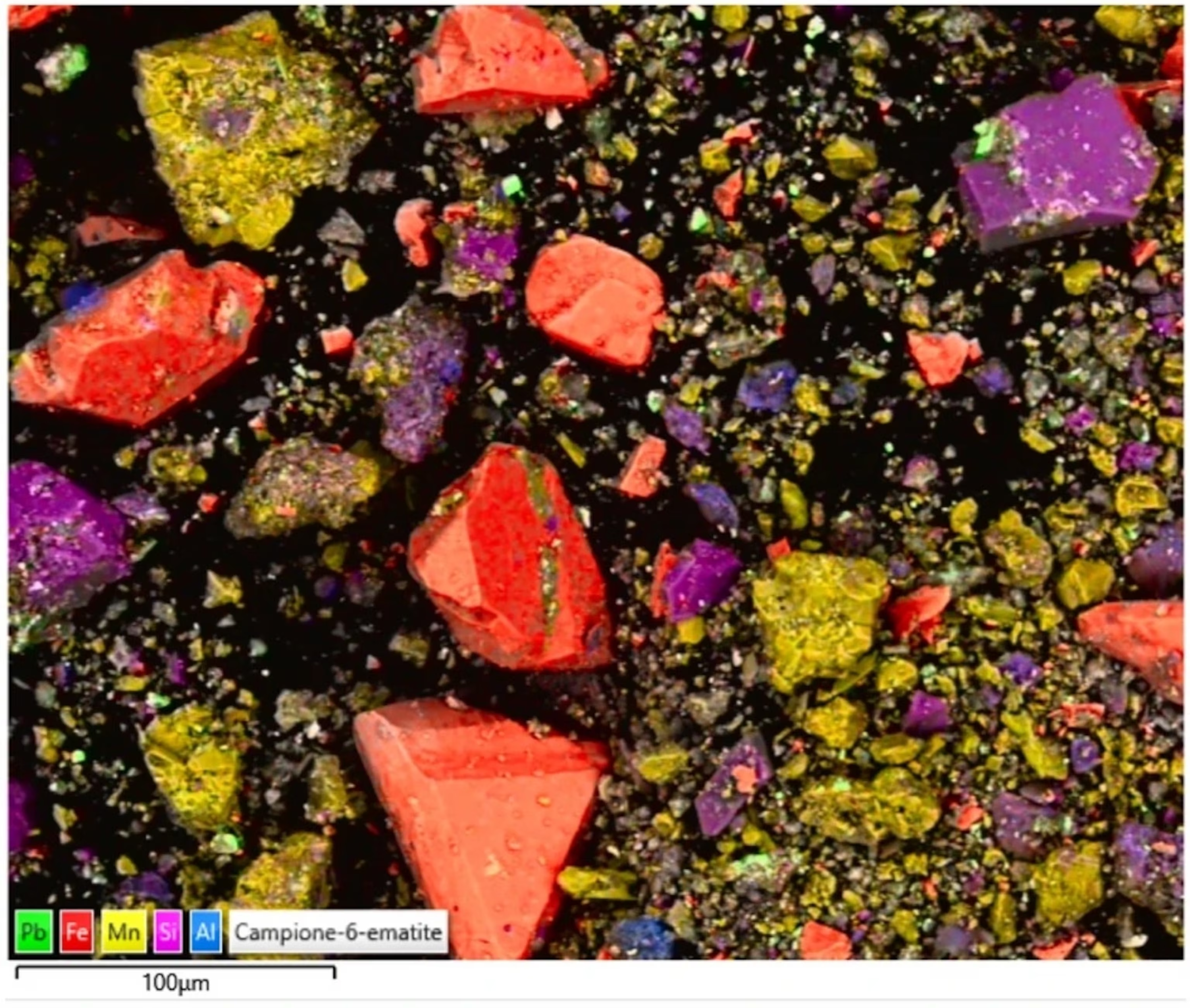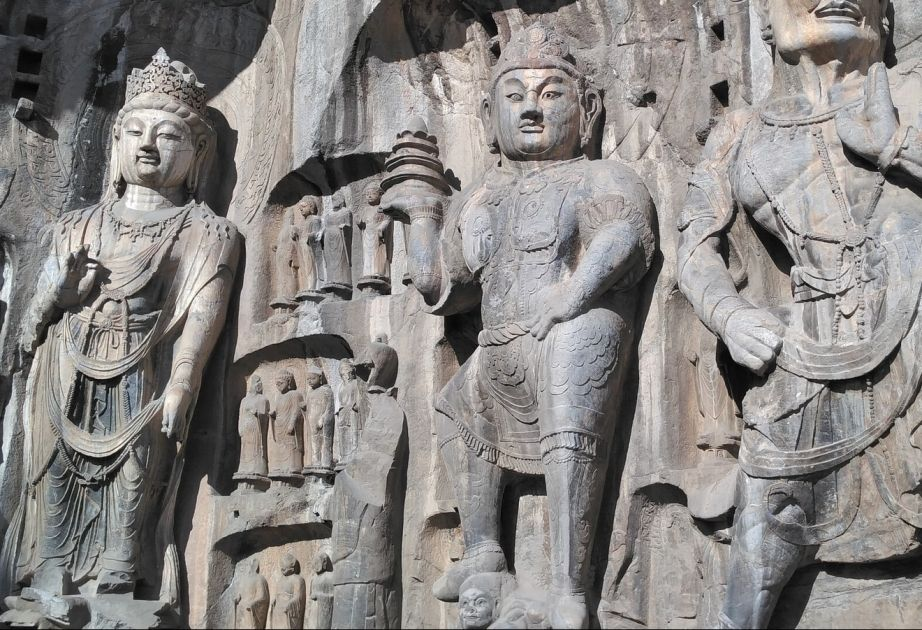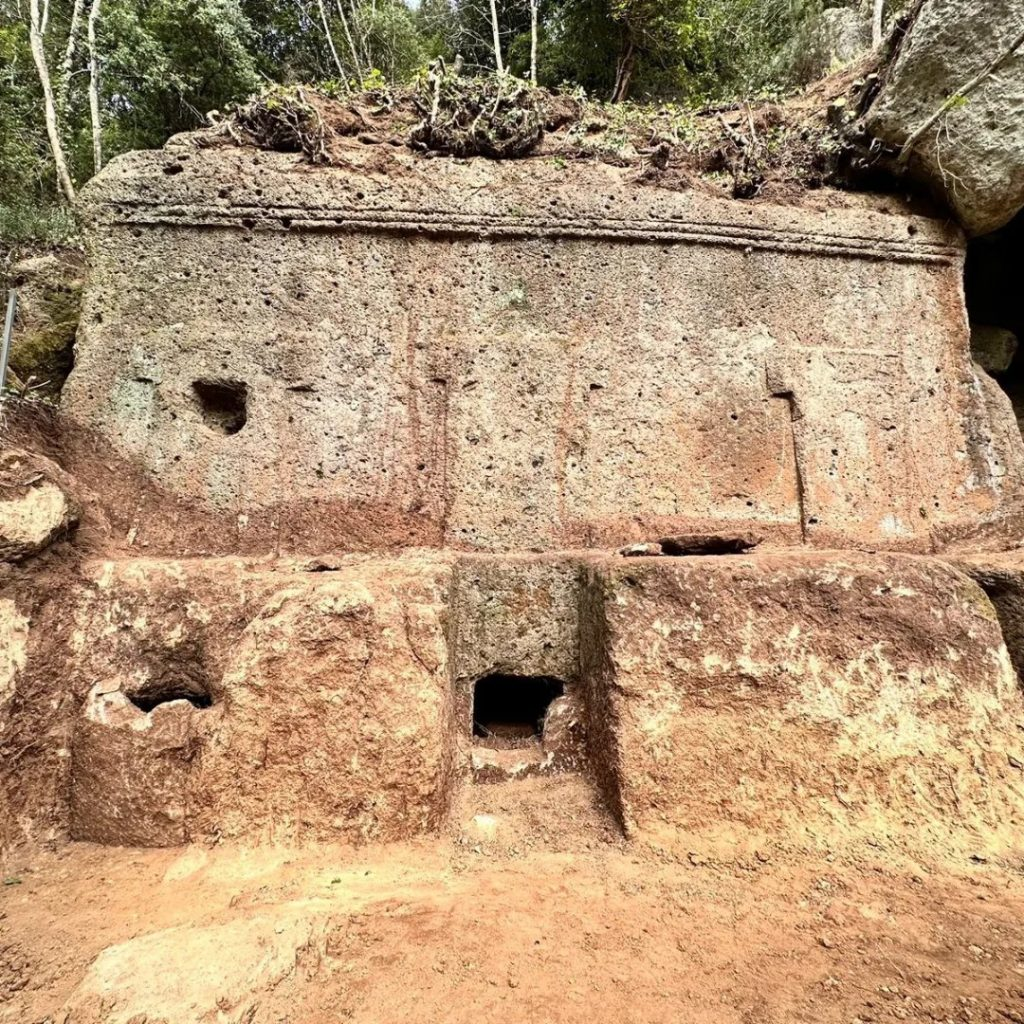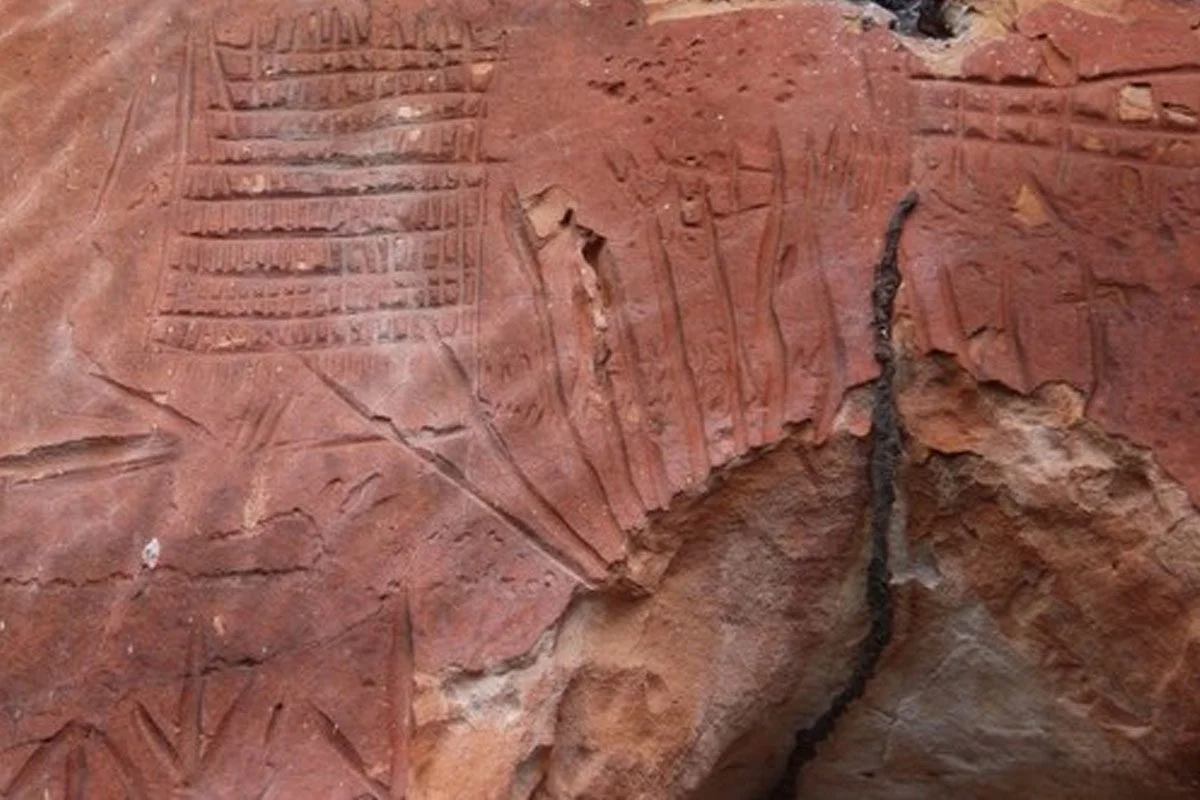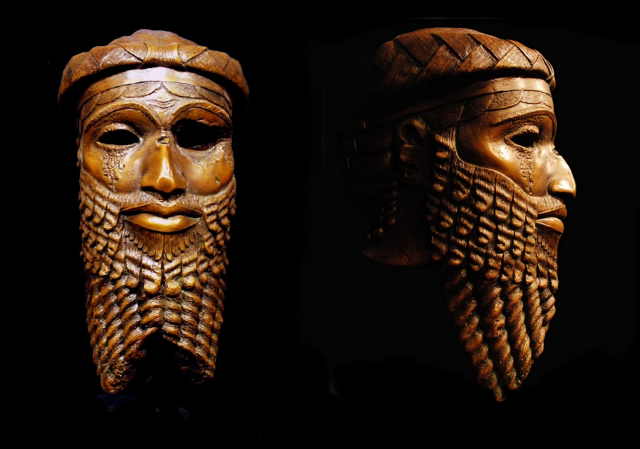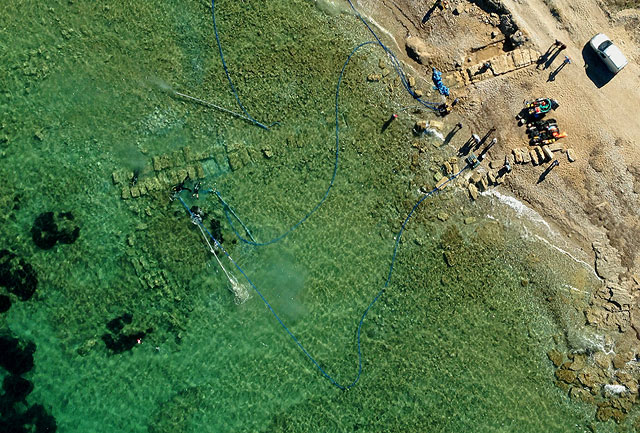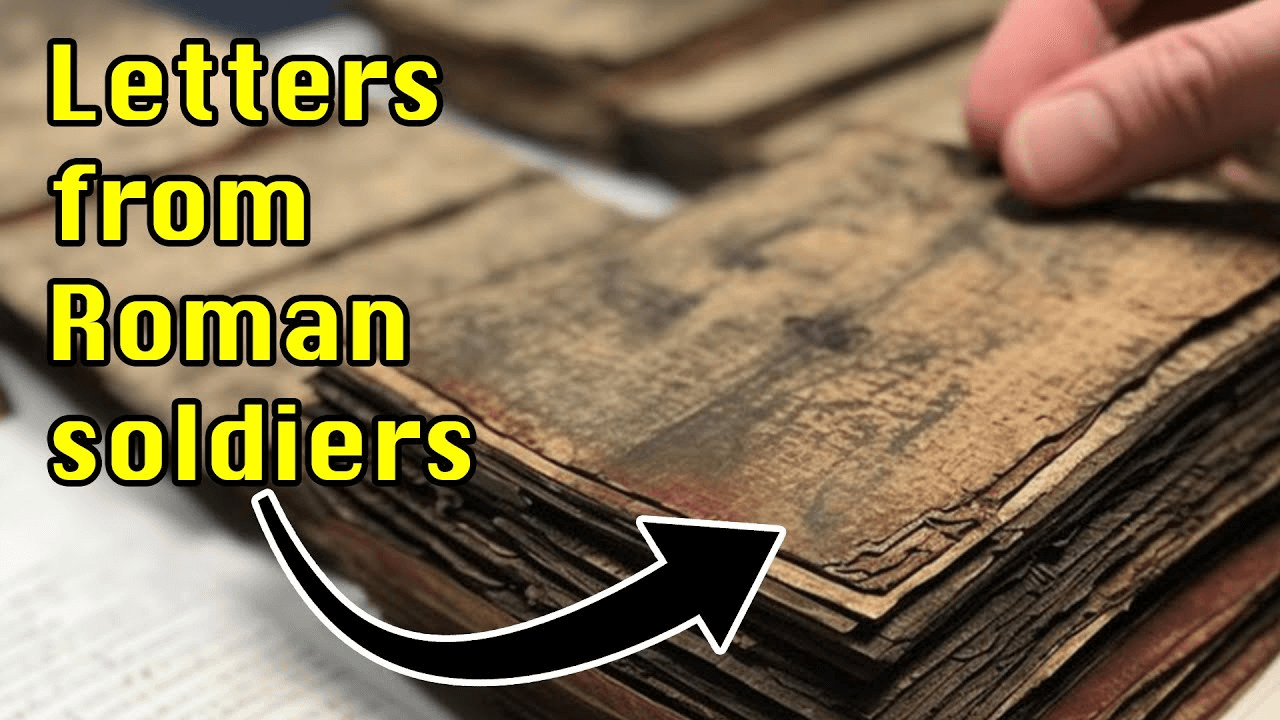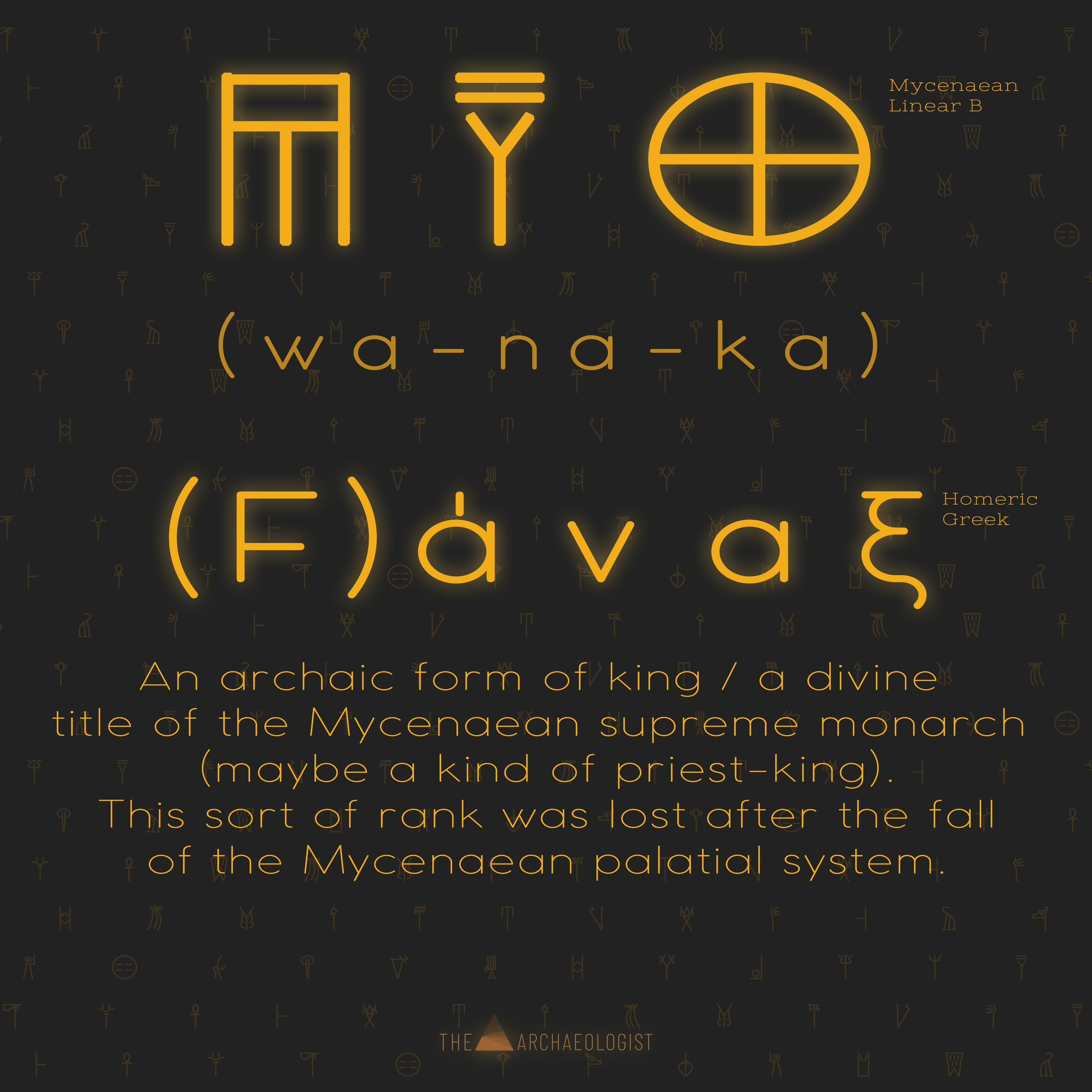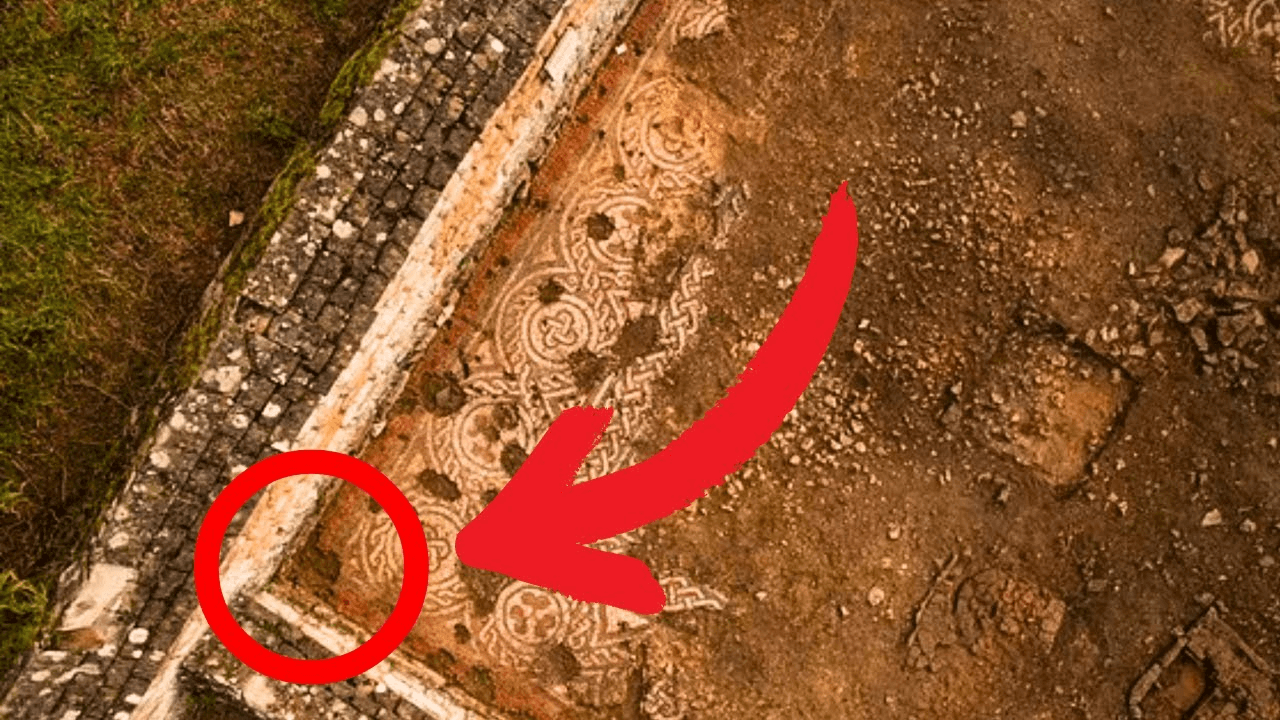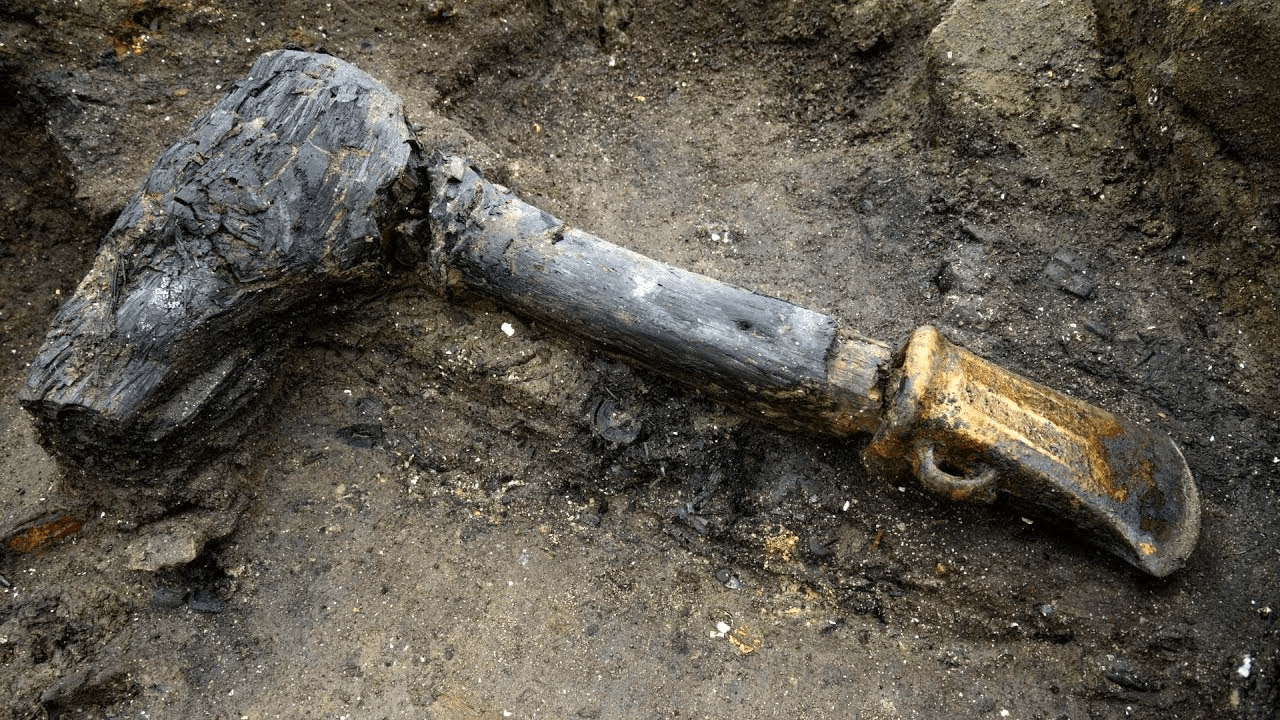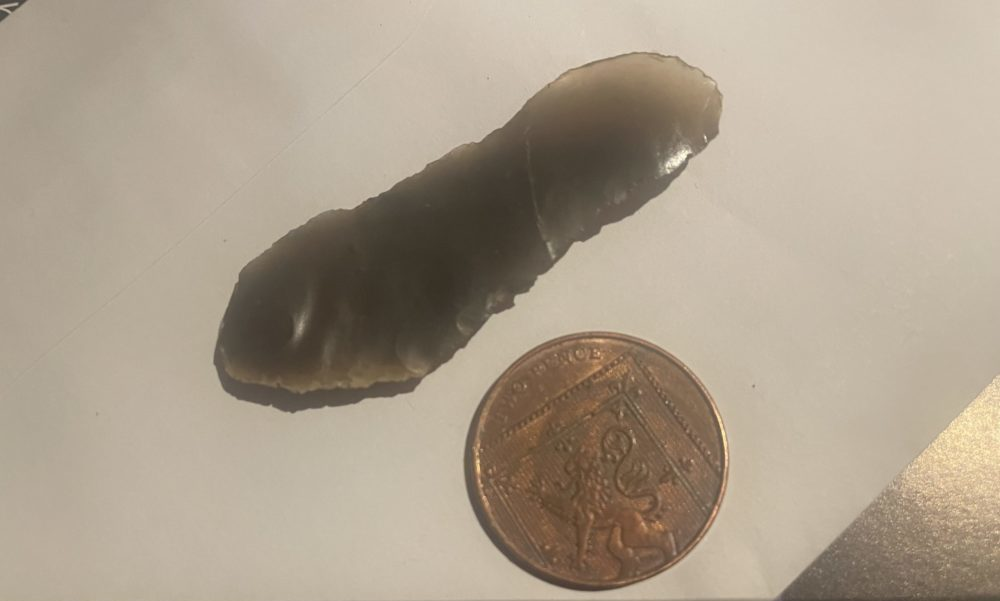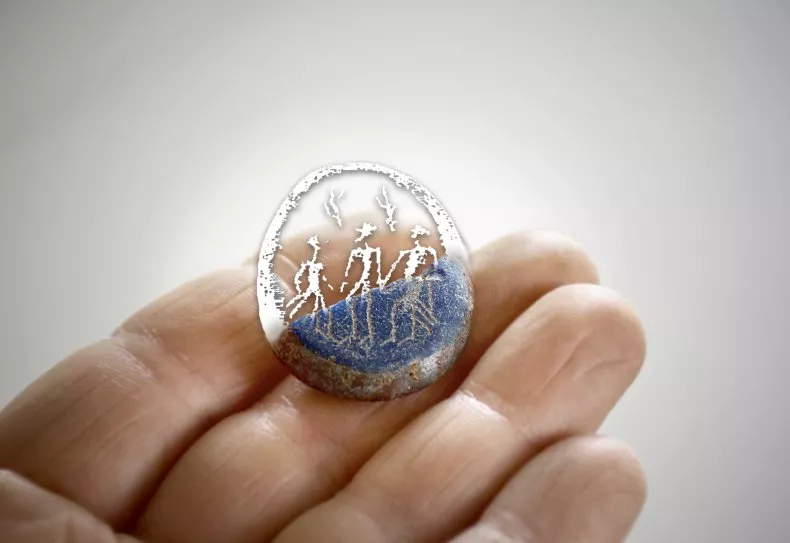The world's oldest insult has been discovered on a clay tablet and surprisingly, it was intended to teach language as well as morality. Written more than 4,000 years ago in Sumerian, the language of the elite in Acadian society, the insults were used to teach students the language and how to write, as well as ridicule the lazy and foolish. The tablet contains two insults: “Your husband has no clothes to wear. You yourself are wearing such rags that your butt sticks out of them” and “You have the intelligence of a monkey. Your house is like a pigsty. Your living room is like an oven”. The insults were believed to have been written by a student at the behest of a teacher, rather than behind their back. The goal of the Acadian teachers was to teach language and morality, and it seems that they used ridicule as a tool to teach the importance of hard work and intelligence. The insults were written in what is now Iraq a few years before the invention of air conditioning, making the insult “your living room is like an oven” particularly relevant for the time.
5000-Year-Old Book Found in Egypt REVEALS Horrifying Message About Human Existence
The 5000-year-old book of Enoch has just been found, and several have stated that the texts would cause an uproar among believers. There have been several debates on whether or not the book of Enoch should be regarded as one of the books in the Bible and fixed into the apocalyptic category. However, there have been doubts about its accuracy and how it contradicts the principles of the modern orthodox church. Since the translation of his texts, it has been discovered that he has influenced much of the New Testament, and several epistles have made several references to his book. At one time, it was accessible until it was banned by church fathers and the government for its contradicting views. Now that it has been reintroduced and made known to believers, what message does it pass?
4,000-year-old lipstick found in Iran may be the oldest in the world
4,000-Year-Old Lipstick: A Timeless Symbol of Beauty Unearthed in Iran
The carved chlorite vial containing the cosmetic preparation.
University of Padova and ISMEO, Rome
In a groundbreaking archaeological revelation, researchers have unveiled what is believed to be the world's oldest known lipstick—a small, ornate stone vial containing a deep red paste, discovered in southeastern Iran. Dating back to the Bronze Age, this remarkable artifact offers a glimpse into the ancient rituals of beauty and adornment, proving that the allure of a crimson lip knows no bounds across millennia.
The discovery, made possible by the 2001 flooding of the Halil River Valley, has captivated scholars and beauty enthusiasts alike. Carbon-dated between 1936 B.C. and 1687 B.C., the lipstick vial represents a tangible link to a bygone era—a time when civilizations thrived alongside the banks of ancient rivers and the echoes of history reverberated through the ages.
"We hypothesize a lip paint, rather than a solid lipstick because we have no certain idea about the original consistency or fluidity of the cosmetic substance," explained Massimo Vidale, one of the study's lead researchers and a professor of archaeology at the University of Padua in Italy. This revelation underscores the complexities of ancient cosmetic practices, offering insight into the materials and techniques employed by our ancestors in their quest for beauty.
The lipstick vial, crafted from chlorite stone, stands as a testament to the ingenuity and craftsmanship of ancient artisans. Measuring approximately two inches tall by three-quarters of an inch wide, it bears the hallmarks of meticulous handiwork, a testament to the reverence accorded to beauty and adornment in ancient civilizations.
Mineralogical composition of the cosmetic preparation. Enhanced in false colors, red, micro-stratified fragmented sheets of hematite pinacoid forms; pseudo-octahedral crystals of braunite in yellow; fragmented (ground) quartz particles in pink. Rare cubic crystals of galena appear in green.
University of Padova and ISMEO, Rome
But perhaps most striking are the mineral components of the lipstick artifact, which bear a striking resemblance to the recipes of contemporary lipsticks. Hematite, darkened with manganite and braunite, along with traces of galena and anglesite, form the basis of the vibrant red pigment, mixed with vegetal waxes and other organic substances—a composition that mirrors the ingredients found in modern cosmetics.
For Vidale, the discovery holds a deeply personal significance, offering a glimpse into the lives of women and children of ancient civilizations. "I've always felt closely connected to the people and civilizations of ancient Iran," he reflected. "And having a grown-up daughter, I've always been deeply intrigued when I came across material evidence that could be linked to women and children of that age and those cultures."
As we marvel at this ancient artifact, we are reminded of the enduring quest for beauty and self-expression that transcends time and space. From the banks of ancient rivers to the bustling streets of modern cities, the allure of a crimson lip endures—a timeless symbol of femininity, power, and grace.
Ancient Buddhist temple discovered in northern China
In a remarkable archaeological revelation, a Buddhist temple dating back to the illustrious era of the Northern Wei Dynasty (386-534 AD) has been unearthed in Shanxi Province, northern China. This captivating discovery sheds new light on the rich cultural and religious heritage of the region, offering a tantalizing glimpse into the spiritual practices of ancient civilizations.
According to reports from the Shanxi Archaeological Institute, the newly discovered temple stands as a testament to the architectural and artistic prowess of the Northern Wei Dynasty. Situated approximately 300 meters from the ruins of the dynasty's palace, this ancient monument is believed to have served as a royal temple, offering solace and sanctuary to worshippers and pilgrims alike.
Upon closer inspection, researchers were astonished to uncover a square hole at the heart of the temple, adorned with pearls and copper rings—a testament to the meticulous craftsmanship of the era. Within the temple's sacred confines lay a trove of treasures, including over 200 Buddhist statues, each imbued with spiritual significance and artistic splendor.
Among these statues, some bore traces of intricate paintings, while others shimmered with the luster of gold—an indication of the reverence and devotion accorded to Buddhist iconography during this period. It is believed that the walls of the temple were once adorned with vibrant murals, depicting scenes from Buddhist scriptures and legends, offering a visual tapestry of enlightenment and transcendence.
The discovery of this ancient Buddhist temple serves as a poignant reminder of the enduring legacy of Buddhism in China, tracing its roots back to a time of great dynasties and cultural flourishing. As researchers continue to unravel the mysteries hidden within its hallowed halls, the temple stands as a testament to the enduring quest for spiritual enlightenment and the timeless allure of ancient wisdom.
In the heart of Shanxi Province, amidst the tranquil landscapes of northern China, a piece of history has been unearthed—a sacred sanctuary that bears witness to the ebb and flow of time, beckoning us to explore its secrets and embrace the legacy of the past.
1,100-Year-Old Sword Unearthed in Oxfordshire River
A Rare Glimpse into Viking History
The 1,100-year-old sword was found in the River Cherwell
(Trevor Penny)
In a remarkable discovery that echoes with the echoes of ancient battles and tales of Norse warriors, a 1,100-year-old Viking sword has emerged from the depths of the River Cherwell in Oxfordshire. Unearthed by a magnet fisherman, the weapon, dating back to between AD 850 and 975, offers a rare glimpse into the tumultuous era of Viking raids and conquests.
The sword, pulled from the river's embrace last year, now rests in the care of the Oxford Museum, a tangible link to a bygone age of seafaring adventurers and fearsome warriors. Trevor Penny, the fortunate individual who stumbled upon this relic of the past, recounted the thrilling moment of discovery, a scene straight out of a Norse saga.
"I was on the side of the bridge and shouted to a friend on the other side of the bridge, 'What is this?'" Penny recalled. "He came running over shouting 'It looks like a sword!'" In that instant, history was brought to life, as the ancient blade emerged from its watery grave to bear witness to the passage of time.
The Viking Age, characterized by raids, exploration, and conquest, saw Norse warriors traverse the seas in search of riches and glory. From the infamous raid on Lindisfarne in 793 to the far-reaching expeditions across Europe, the Vikings left an indelible mark on history, their legacy woven into the fabric of British soil.
But the discovery of the Viking sword is not the only recent revelation to captivate the archaeological community. In Spain, archaeologists unearthed a 2,000-year-old lead projectile inscribed with the name of Julius Caesar—an artifact believed to have been used as propaganda during the general's civil war.
Trevor Penny discovered the 1,100-year-old Viking sword in the River Cherwell last year
(Trevor Penny)
Measuring 4.5 by 2 centimeters and weighing 71 grams, the lead projectile, known as a "glans inscripta," bears the inscription "IPSCA" on one side, likely referring to an unknown Spanish town, and "CAES" on the other, a nod to Caesar himself. This intriguing discovery hints at Indigenous Spanish support for the dictator during his tumultuous reign—a testament to the complexities of political allegiance and propaganda in ancient times.
As these remarkable artifacts continue to capture the imagination of historians and enthusiasts alike, they serve as reminders of the enduring power of the past to shape our understanding of the present. From Viking swords to Roman projectiles, each discovery offers a window into the rich tapestry of human history, inviting us to delve deeper into the mysteries of antiquity and uncover the untold stories of our ancestors.
Courtesy Superintendency of Archaeology, Fine Arts and Landscape in Southern Etruria.
Ancient Marvel Unearthed: Hidden Etruscan Tomb Revealed in Italy
In a landscape steeped in history, where the whispers of the past echo through time, a monumental discovery has emerged from the shadows of foliage—a giant, cube-shaped stone tomb, nestled within the ancient San Giuliano Rock Necropolis in central Italy. This captivating find, announced by Italian archaeology authorities, offers a tantalizing glimpse into the enigmatic world of the Etruscans, an ancient society that once flourished between the Arno and Tiber Rivers.
The necropolis, a sprawling testament to Etruscan civilization, lies ensconced within the Regional Park of Marturanum, near the municipality of Barbarano Romano, a mere 45 miles northwest of the eternal city of Rome. Accessible only through rugged ravines and overgrown forests, this hidden gem harbors secrets dating back to the 7th century B.C.E., offering a portal to a bygone era.
The unveiling of the newfound tomb, a collaborative effort between the esteemed firm Gentili Restauri and local authorities, marks a significant milestone in the ongoing exploration of this ancient site. Concealed behind a veil of foliage, the tomb remained partially obscured until recent clean-up operations and brush-clearing efforts revealed its imposing presence—a testament to the enduring allure of archaeological discovery.
Dubbed a "semi-cube" layout, the tomb boasts a distinctive architectural design, with one side left open while three sides are meticulously carved into the surrounding rock wall. Its proximity to the illustrious Queen's Tomb, a grand structure dating back to the fifth century B.C.E., adds to its intrigue, offering a juxtaposition of ancient splendor and timeless mystery.
The Queen's Tomb, a monumental edifice measuring an impressive 46 feet in width and 32 feet in height, stands as a testament to the grandeur of Etruscan funerary architecture. Adorned with side stairs leading to an upper terrace and adorned with semi-finished Doric doors, it offers a glimpse into the opulent rituals and traditions of a bygone era.
For the Etruscans, a society steeped in mystique and tradition, the necropolis served as a sacred repository for the departed, a final resting place where elaborate funerary rites and ceremonies unfolded. From painted murals adorning the walls of burial chambers to finely crafted pottery and bronze artifacts, each discovery offers a window into the rich tapestry of Etruscan culture.
As news of the discovery reverberates through the archaeological community, the Superintendency of Archaeology, Fine Arts, and Landscape in Southern Etruria has announced plans to inform the public of upcoming opening dates, inviting enthusiasts and scholars alike to witness the unfolding saga of this ancient marvel.
In the heart of Italy's verdant landscapes, where the past meets the present, the legacy of the Etruscans endures—a testament to the enduring spirit of exploration and the timeless allure of discovery.
16 new ancient rock art sites have been uncovered in Jalapão, Brazil
IPHAN identifies 16 new archaeological sites in Tocantins
Remnants are located in Jalapão, the eastern region of the state
Fotos: Rômulo Macedo/Iphan - TO
The archaeology team of the National Institute of Historic and Artistic Heritage (IPHAN) in Tocantins has concluded, in the past month, the identification and cataloging of 16 more archaeological sites in the Jalapão region, located in the east of Tocantins. The area consists of panels with pre-colonial rock art made by human groups approximately two thousand years ago.
"Among the symbols carved and painted on the rocks, human footprints, animal footprints such as deer and wild pig, and figures resembling celestial bodies stand out," explains the archaeologist from IPHAN in Tocantins, Rômulo Macedo. He led the missions carried out between 2022 and 2023 to investigate the existence of new sites in the region.
However, the archaeologist emphasizes that this cultural asset has been threatened by various factors. Wind erosion, vandalism, forest fires, and deforestation are among the main threats to the identified sites. To minimize these impacts, IPHAN has initiated conservation and Heritage Education actions in the region, aiming to protect and promote this Brazilian cultural heritage.
Archaeological heritage of Tocantins
The recent discoveries expand Tocantins' archaeological heritage. The state has great potential for archaeological research, with numerous sites registered by IPHAN. The newly discovered sites now form part of an archaeological complex located in Jalapão. Human occupations in those areas date back up to 12,000 years before the present and formed archaeological sites during the pre-colonial period, until the contact with European colonizers. Structures related to historical archaeology can also be found, significant of the occupation of this contact area between the Amazon Rainforest and those of the Central Brazil, the Cerrado biome.
With the expansion of infrastructure works in the Amazonian states, Tocantins is experiencing a significant increase in archaeological research conducted within the scope of environmental licensing, which has allowed the collection of data on previously unknown archaeological areas. In this context, archaeological activity is carried out by companies involved in salvaging heritage in areas impacted by economic ventures. Two actions are considered priorities: the systematization and socialization of knowledge about the found assets and the integration between archaeological and environmental licensing.
Paleontologists have excavated the skeleton of a titanosaur that was intact from its hind skull to its tail.(Damien Boschetto via CNN Newsource)
A scarcely found gigantic dinosaur skeleton has been unearthed, nearly intact
Rare Intact Titanosaur Skeleton Unearthed in Southern France: A Window into Prehistoric Past
In a remarkable discovery that harkens back to 2022, an amateur paleontologist, Damien Boschetto, and his loyal canine companion stumbled upon a treasure trove of prehistoric secrets in the verdant forests of southern France. A chance encounter with a collapsed cliff led to the unearthing of a nearly complete titanosaur skeleton, spanning an impressive 10 meters in length.
Collaborating with the Archaeological and Paleontological Cultural Association at the Cruzy Museum and the esteemed French National Center for Scientific Research, Boschetto's discovery sparked a flurry of activity as experts descended upon the site to excavate this prehistoric marvel.
What emerged from the depths of time was nothing short of awe-inspiring—a titanosaur skeleton, preserved in astonishing detail from its hind skull to its graceful tail. Titanosaurs, the gentle giants of the dinosaur kingdom, once roamed the earth during the Late Jurassic Epoch and the Cretaceous Period, their colossal forms casting shadows over ancient landscapes.
The significance of this discovery cannot be overstated. While titanosaur fossils have been unearthed across Europe, rarely do they emerge in such pristine condition, their bones intertwined in a delicate dance of preservation. The skeleton, estimated to be around 70 to 72 million years old, offers a tantalizing glimpse into the world of these magnificent creatures, shedding light on their anatomy, behavior, and evolutionary history.
Paleontologists have excavated the skeleton of a titanosaur that was intact from its hind skull to its tail.(Damien Boschetto via CNN Newsource)
Boschetto aptly describes the find as "extraordinary," a sentiment echoed by scientists and enthusiasts alike. Unearthing bones in their near-original anatomical position is a rarity in the field of paleontology—a testament to the meticulous care and dedication of those involved in the excavation process.
But the discovery doesn't end there. Alongside the titanosaur skeleton, paleontologists retrieved several other fossils, each offering a glimpse into the rich tapestry of life that once flourished in these ancient lands. From the remains of other dinosaurs to the fossilized remnants of vertebrates long extinct, the site serves as a window into a bygone era—a time when giants walked the earth and the world was a vastly different place.
As researchers continue to study and analyze these precious relics, the story of the titanosaur and its kin unfolds, weaving a narrative that spans millions of years. And amidst the dense foliage of southern France, a new chapter in the annals of paleontological history is written—one that reminds us of the enduring power of curiosity, discovery, and the boundless wonders of the natural world.
Paleontologists have excavated the skeleton of a titanosaur that was intact from its hind skull to its tail.(Damien Boschetto via CNN Newsource)
Was the Akkadian Empire the world's initial recorded empire?
The Akkadian Empire: A Monument to Ancient Innovation and Ambition
In the tapestry of human history, few threads are as richly woven and enigmatic as that of the Akkadian Empire—the world's first recorded empire and a beacon of innovation that illuminated the ancient world. Founded by the legendary Sargon the Great, this multinational juggernaut emerged from the cradle of civilization, leaving an indelible mark on the annals of time.
Spanning the fleeting years between 2334-2218 BCE, the Akkadian Empire rose from the fertile crescent of southern Mesopotamia, uniting a patchwork of city-states under its formidable banner. At its heart lay the enigmatic city of Akkad, its precise location lost to the sands of time but its influence reverberating across the ancient world.
Under the visionary leadership of Sargon and his successors, the Akkadian Empire pioneered a plethora of innovations that would echo through the corridors of history. From the establishment of trade routes that crisscrossed the ancient world to the introduction of a revolutionary postal system, the Akkadians laid the foundation for the interconnected global networks that would define civilizations for millennia to come.
Yet, perhaps the empire's greatest legacy lies in its cultural and intellectual flourishing. In the embrace of stability, art, literature, agriculture, and the sciences blossomed, transforming the region into a crucible of creativity and innovation. The Akkadian tongue, with its distinctive cuneiform script, became the lingua franca of the era—a testament to the empire's far-reaching influence.
Central to the Akkadian narrative is the figure of Enheduanna, daughter of Sargon and High Priestess of Inanna at Ur. Recognized as the world's first author, Enheduanna wielded profound influence over religious and cultural affairs, her legacy enduring as a testament to the enduring power of intellect and vision.
Yet, like all empires, the Akkadian colossus faced the inexorable march of time and the capricious whims of fate. The reigns of Sargon's successors, marked by rebellion and strife, heralded the empire's gradual decline. The hubris of Naram-Sin, who dared to style himself as a living god, is said to have invited divine retribution, paving the way for the empire's eventual demise.
In the annals of history, the fall of Akkad remains shrouded in mystery and speculation. While legends speak of divine retribution and barbarian invasions, modern interpretations point to the specter of climate change—a harbinger of famine and disruption that hastened the empire's collapse.
In the twilight years of Akkad, the names of its last kings—Dudu and Shu-Turel—faded into obscurity, their power diminished, their legacy overshadowed by the echoes of a bygone era. Yet, even as the sands of time obscure its memory, the Akkadian Empire endures as a testament to the boundless potential of human endeavor—a beacon of innovation and ambition that continues to inspire and captivate the imagination of generations to come.
Lechaion: The largest port of Ancient Greece is revealed to be even older than previously believed
Lechaion Port's Timeless Legacy
In the annals of ancient history, the Mediterranean's heartbeat throbbed with the rhythm of trade and commerce, with Corinth as its pulsating core. Nestled snugly on a narrow isthmus, Corinth's strategic significance transcended mere geography—it was the nexus between north and south, the conduit linking the Aegean and Ionian Seas. And at the heart of this bustling city lay Lechaion, the colossal port that stood witness to millennia of maritime exchange.
Recent archaeological revelations have thrust Lechaion into an even more venerable light, pushing back the clock of its existence by a staggering 500 years. What was once believed to have been a 7th-century BCE creation now emerges as a Bronze Age marvel, dating back to as early as 1381 BCE—a testament to human ingenuity and ambition that predates even the epic tales of Homer.
The discovery, spearheaded by a dedicated team of international researchers led by French geoarchaeologist Antoine Chabrol, unveils a tale etched in sediment and traces of lead pollution. Through meticulous analysis of mud cores extracted from the harbor's depths, Chabrol and his cohorts unearthed a sharp spike in lead levels—a telltale sign of human activity dating back over three millennia ago. This newfound evidence not only reshapes our understanding of Lechaion's antiquity but also underscores its pivotal role in shaping the course of ancient trade routes.
But the revelation doesn't stop there. Lignite, a specific type of coal, emerges as a silent witness to Lechaion's bustling activity during the Bronze Age. Discovered amidst the sediment, these fossil fuel nuggets hint at a sophisticated maritime infrastructure that fueled the ambitions of ancient merchants, ferrying goods across vast distances with unparalleled efficiency.
Yet, for all its storied past, Lechaion's ancient structures remain elusive, shrouded in the mists of time. While the physical remnants unearthed thus far belong to the Roman period and beyond, the essence of historical continuity permeates the air. From the Mycenaeans to the Byzantines, a tapestry of civilizations left their indelible mark upon this hallowed ground, weaving a narrative of resilience and endurance that transcends the ages.
And as the archaeological odyssey continues, with each passing excavation season offering new insights into Lechaion's rich tapestry, the allure of ancient commerce beckons us to delve deeper. With cutting-edge techniques and a fervent zeal for discovery, researchers are poised to unlock the mysteries that lie beneath, shedding light on a legacy that spans millennia.
But perhaps, amidst the dust of ages, lies an even deeper truth—a testament to humanity's unyielding quest for connection and exchange. For beyond the artifacts and sediment layers lies a timeless reminder of our shared history—a testament to the enduring spirit of exploration that binds us across the ages. And in Lechaion's hallowed harbor, that spirit lives on, beckoning us to embark on a voyage of discovery that transcends the bounds of time itself.
The Real Letters from Roman Soldiers
In this intriguing video, we embark on a journey through time to explore the remarkable discovery of the oldest handwritten texts ever found—letters penned by Roman soldiers nearly two millennia ago. These extraordinary artifacts, inscribed on wooden tablets using ink derived from charcoal and tree sap, were unearthed at Vindolanda, a Roman Fort nestled beside the iconic Hadrian's Wall. Remarkably preserved in anaerobic bog-like conditions, these letters offer a captivating window into the daily experiences of Roman soldiers during the 1st to 2nd century AD.
Covering a diverse array of topics ranging from mundane greetings to matters of health, shopping lists, and even business affairs, these letters provide invaluable insights into the intricacies of Roman military life. One poignant account recounts the plight of a soldier who suffered a beating at the hands of his comrades, pleading with his lord for mercy to spare an innocent man from punishment. Another letter sheds light on the extensive trade networks that sustained the Roman garrisons, showcasing the immense logistical efforts required to support far-flung fortifications.
Through these intimate glimpses into the lives of those stationed at Vindolanda, we gain a deeper understanding of their relationships, struggles, and familial ties. This discovery not only enriches our understanding of Roman military operations but also offers poignant reminders of the humanity that thrived amidst the empire's martial endeavors.
Indeed, the significance of these letters cannot be overstated. They serve as invaluable resources for historians, shedding light on the intricacies of Roman society and providing a nuanced perspective on the everyday experiences of soldiers during this pivotal period in history. As we delve into their contents, we unlock a treasure trove of knowledge that illuminates the resilience, camaraderie, and complexities of life within the Roman Empire.
100 Ancient MYCENAEAN Names and Their Meanings
The Mycenaean civilization, flourishing from the late Bronze Age to the early Iron Age, left behind a rich tapestry of mythology, history, and culture. Within this tapestry lie the names of gods, heroes, kings, and queens, each carrying deep meanings and significance. Let's delve into the world of Mycenaean names and unravel their meanings:
Agamemnon: This legendary name means "Resolute and Mighty," befitting the powerful king of Mycenae and leader of the Greek forces during the Trojan War.
Clytemnestra: Famed for Her Cunning, Clytemnestra was the wife of Agamemnon, notorious for her role in his demise.
Menelaus: Meaning "Strength of the People," Menelaus was the brother of Agamemnon and husband of Helen of Troy.
Helen: Shining Light, Helen was the queen of Sparta whose abduction by Paris sparked the Trojan War.
Achilles: Pain - The mightiest hero of the Trojan War, known for his invulnerability except for his heel.
Patroclus: Glory of the Father, Patroclus was the beloved companion of Achilles and a tragic figure in the war.
Odysseus: Son of Pain, the cunning hero of Homer's Odyssey, renowned for his intelligence and endurance.
Penelope: Weaver, Penelope was the wife of Odysseus, famed for her fidelity and cleverness in delaying suitors.
Nestor: Homecoming, this wise old counselor of the Greeks during the Trojan War bore a name signifying his connection to the concept of home.
Andromache: Manly Fighter, Andromache was the wife of Hector, the Trojan prince, and a tragic figure in the war.
Hector: Defender, the noble prince of Troy, known for his bravery and loyalty.
Cassandra: Shining Upon Men, Cassandra, daughter of King Priam of Troy, possessed the gift of prophecy but was cursed never to be believed.
Paris: Wager, Paris, prince of Troy, whose abduction of Helen triggered the Trojan War.
Priam: Redeemed, King of Troy during the war, and father of Hector and Paris.
Briseis: Daughter of Briseus, a captive of Achilles during the war, leading to a rift between him and Agamemnon.
Ajax: Eagle, a mighty Greek hero known for his strength and valor.
Diomedes: God-like Counsel, a Greek hero who played a significant role in the war.
Aeneas: Praised, a Trojan hero and prince, destined to survive the fall of Troy and found Rome.
Clytius: Renowned, a mythical figure from Greek mythology.
Cepheus: Bearer, a hero in Greek mythology, known for his role in the story of Perseus.
Iphigenia: Strong-born, daughter of Agamemnon and Clytemnestra, tragically sacrificed to appease Artemis.
Electra: Amber, daughter of Agamemnon and Clytemnestra, known for her role in avenging her father's death.
Orestes: Mountain Dweller, son of Agamemnon and Clytemnestra, who avenged his father's murder.
Perseus: Destroyer, the legendary Greek hero who slew Medusa and rescued Andromeda.
Medusa: Guardian, a Gorgon monster whose gaze turned people to stone.
Heracles: Glory of Hera, the greatest of Greek heroes, known for his strength and his twelve labors.
Atreus: Fearless, father of Agamemnon and Menelaus.
Tyndareus: Son of Tyndareus, father of Helen of Troy and Clytemnestra.
Leucippus: White Horse, a figure from Greek mythology, known for his role in the story of Castor and Pollux.
Castor: Beaver, one of the Dioscuri twins, known for his skill in taming horses.
Pollux: Much Wine, the divine twin brother of Castor, known for his boxing skills.
Hippolytus: Untamed Horse, son of Theseus and Hippolyta, known for his love of hunting and rejection of Aphrodite.
Ariadne: Most Holy, daughter of King Minos of Crete, who helped Theseus defeat the Minotaur.
Minos: King, legendary king of Crete, known for his labyrinth and the Minotaur.
Pasiphae: Shining Upon All, wife of King Minos of Crete and mother of the Minotaur.
Daedalus: Cunningly Wrought, a skilled craftsman and architect, known for creating the Labyrinth of Crete.
Icarus: Glory of Hera, son of Daedalus, known for flying too close to the sun with wings made of feathers and wax.
Andromeda: Ruler of Men, daughter of King Cepheus and Queen Cassiopeia, rescued by Perseus from a sea monster.
Danaë: Godly, mother of Perseus, imprisoned by her father Acrisius to prevent her son's birth.
Harmonia: Concord, daughter of Ares and Aphrodite, wife of Cadmus, and mother of the Spartoi.
Cadmus: From the East, founder of Thebes, credited with introducing the alphabet to Greece.
Tiresias: He Who Resolves, a blind prophet of Thebes, known for his wisdom and ability to understand the language of birds.
Antigone: Against Birth, daughter of Oedipus and Jocasta, known for her defiance of Creon's decree and her loyalty to family.
Creon: Ruler, king of Thebes, known for his stubbornness and tragic fate in Greek mythology.
Oedipus: Swollen Foot, the tragic king of Thebes who fulfilled a prophecy by unwittingly killing his father and marrying his mother.
Jocasta: Shining Moon, wife and mother of Oedipus, known for her tragic role in the story of Oedipus Rex.
Ismene: Knowledge, daughter of Oedipus and Jocasta, known for her loyalty to her family in Greek mythology.
Eteocles: True Glory, son of Oedipus and Jocasta, known for his role in the tragic story of the Seven Against Thebes.
Polynices: Manifold Strife, son of Oedipus and Jocasta, known for his role in the tragic story of the Seven Against Thebes.
Penthesilea: Mourning Overturned, Queen of the Amazons, known for her bravery in battle and her tragic death at the hands of Achilles.
Hippolyta: Untamed, Queen of the Amazons, known for her strength and valor.
Teucer: Far Shooter, a hero in Greek mythology, known for his skill with the bow.
Laodice: Justice of the People, daughter of King Priam of Troy and Queen Hecuba.
Hecuba: Far Off, queen of Troy, wife of King Priam, and mother of Hector and Paris.
Polyxena: Many Foreigners, daughter of King Priam and Queen Hecuba of Troy.
Memnon: Ruler, Ethiopian king and ally of Troy during the Trojan War, known for his bravery.
Aegisthus: Strong Sorrow, lover of Clytemnestra and co-conspirator in the murder of Agamemnon.
Iphitus: Heroic, son of Eurytus, known for his friendship with Heracles.
Deiphobus: Polite, son of King Priam of Troy, known for his bravery in the Trojan War.
Menestheus: Mindful of Strength, Athenian leader during the Trojan War, known for his strategic prowess.
Peleus: Dark Blue, father of Achilles and hero of the Trojan War.
Phoenix: Crimson, tutor and advisor to Achilles during the Trojan War.
Priam: Redeemed, King of Troy during the Trojan War, father of Hector and Paris.
Neoptolemus: New War, son of Achilles, known for his role in the fall of Troy.
Philoctetes: Beloved Neighbor, a Greek hero, known for his bowmanship and involvement in the Trojan War.
Ajax: Eagle, a mighty Greek hero known for his strength and valor.
Agelaus: Leader of the People, a figure from Greek mythology, known for his role in the story of the Trojan Horse.
Polydamas: Many Times Tamed, a Trojan prince, known for his wisdom and foresight during the Trojan War.
Idomeneus: Son of Zeus, king of Crete, and leader of the Cretan contingent in the Trojan War.
Eurypylus: Wide Gate, a Greek hero who fought in the Trojan War.
Aeneas: Praised, a Trojan hero and prince, destined to survive the fall of Troy and found Rome.
Anchises: Wreathed with Ivy, father of Aeneas and lover of Aphrodite in Greek mythology.
Ascalaphus: Bold Spring, a Greek hero who fought in the Trojan War.
Deimachus: Glory of the People, a figure from Greek mythology, known for his role in the story of the Trojan Horse.
Leonteus: Lion-like, a Greek hero known for his bravery in battle.
Philoctetes: Beloved Neighbor, a Greek hero, known for his bowmanship and involvement in the Trojan War.
Pisander: Horse Lover, a Greek hero who fought in the Trojan War.
Pylades: Gatekeeper, friend and cousin of Orestes in Greek mythology.
Thoas: Swift, a Greek hero who fought in the Trojan War.
Oileus: Efficiency, father of Ajax the Lesser in Greek mythology.
Leonteus: Lion-like, a Greek hero known for his bravery in battle.
Antiphus: Contrary Voice, son of Priam and Laothoe, killed by Agamemnon during the Trojan War.
Eurymachus: Wide Battle, one of Penelope's suitors in the Odyssey.
Thersites: Bold Harrier, a Greek soldier in the Trojan War known for his ugliness and outspokenness.
Eumaeus: Kind-Hearted, a loyal swineherd in the Odyssey who helps Odysseus upon his return to Ithaca.
Elatus: Giver of Abundance, a Greek hero who fought in the Trojan War.
Polydorus: Many Gifts, son of Priam and Hecuba, killed by Polymestor during the Trojan War.
Acamas: Unwearying, son of Theseus and Phaedra, who fought in the Trojan War.
Demophon: Thought of the People, son of Theseus, known for his role in the story of the Calydonian Boar.
Phocus: Seal, son of Aeacus, who was killed by his half-brothers.
Euneus: Good Mind, a figure from Greek mythology, known for his role in the story of the Argonauts.
Iolaus: The Violet Dawn, nephew and charioteer of Heracles in Greek mythology.
Laërtes: Wanderer, father of Odysseus in Greek mythology.
Nireus: He who Rules the People, a handsome Greek hero who fought in the Trojan War.
Peisander: Strong, a figure from Greek mythology, known for his role in the story of the Trojan Horse.
Podalirius: Swift-footed, son of Asclepius, known for his medical skills and involvement in the Trojan War.
Protesilaus: First Among the People, Greek hero who was the first to land at Troy but also the first to die.
Thoas: Swift, a Greek hero who fought in the Trojan War.
Ajax the Lesser: Eagle, a Greek hero known for his strength and bravery in battle.
Calchas: Bronze, a Greek seer who played a significant role in the events of the Trojan War.
These names represent not only the characters of Mycenaean mythology but also the values, aspirations, and stories of an ancient civilization that continues to captivate our imagination to this day.
This Discovery Rewrites What Happened After the Romans Left Britain
Recent archaeological findings at the Chedworth Roman Villa near Gloucestershire are challenging conventional beliefs about the decline of Roman life in Britannia. Led by National Trust archaeologist Martin Papworth, a team unearthed a mosaic floor and an intriguing charcoal sample near its foundation wall. What makes this discovery particularly remarkable is the unexpected dating of the charcoal, which analysis in 2017 revealed to be no earlier than 424 AD. This revelation is surprising given the prevailing notion that most Roman villas had been abandoned by this time.
Further analysis of additional charcoal samples provided even more compelling evidence. With date ranges spanning from 414 to 549 AD and 420 to 560 AD, the construction of the mosaic floor appears to have occurred around 480 AD. These findings paint a fascinating picture of Roman life persisting for decades after the departure of the bulk of the Roman army. Rather than a sudden collapse, it seems that new constructions continued to emerge, suggesting a gradual and uneven process of abandonment for Roman structures.
This challenges the simplistic portrayal of Roman Britain's demise often depicted in popular culture. Instead of a swift and total collapse, the archaeological evidence at Chedworth Roman Villa indicates a more nuanced narrative, where the legacy of Roman civilization lingered on, albeit in evolving forms, long after the departure of military forces. Such discoveries compel us to reassess our understanding of this pivotal period in history and the complexities of societal transformation in the wake of imperial withdrawal.
AI GENERATED IMAGE
Most Mysterious Things Discovered In Mountains
Delve into the enigmatic realms of mountain mysteries with this captivating article. Unveiling the secrets hidden amidst towering peaks, it chronicles astonishing discoveries that defy conventional understanding.
In the heart of the Amazon rainforest, a haunting visage emerges from the rugged terrain—a human face etched into the very side of a mountain. Is it a testament to a protective deity's watchful gaze, or the handiwork of a long-lost civilization, sculpting the landscape before vanishing into obscurity?
Meanwhile, in the shadow of Austria's Mount Unterberg, intrigue abounds. From the spiritual musings of the Dalai Lama to the ominous fascinations of Adolf Hitler, who believed it to be a conduit for supernatural power, this mountain has commanded attention throughout history. Legends whisper of potent energies coursing through its rocky veins, harboring lost civilizations, mysterious creatures, and the echoes of a dwarf culture long forgotten.
But the mysteries do not end there. Enter the prophetic visions of Baba Vanga, the renowned Bulgarian mystic, whose predictions foretold of a hidden treasure concealed within a sarcophagus atop a remote mountain straddling the border between Turkey and the USSR. Though the expedition mounted in her honor failed to unearth the fabled riches, it stumbled upon something far more profound—an artifact of ancestral wisdom poised to reshape the annals of history.
From the depths of the Amazonian wilderness to the rugged peaks of Austria and beyond, these mountain mysteries beckon the intrepid soul, promising revelations that transcend the bounds of ordinary comprehension.
12 Most Amazing Ancient Artifacts Finds
Welcome to our website, where incredible archaeological discoveries are our specialty! We're constantly on the lookout for fascinating finds, documenting each one meticulously for our viewers. Today, we're thrilled to present another video showcasing phenomenal ancient artifact discoveries. Sit back, relax, and prepare to be amazed as we take you on a captivating tour through history! We hope you enjoy the journey!
The Greatest Pharaohs of Ancient Egypt
Throughout the annals of history, few civilizations have left as indelible a mark as the ancient Egyptians. At the heart of this magnificent civilization stood the pharaohs, revered rulers who commanded not only earthly power but also divine status. From the mighty builders of the pyramids to the astute diplomats who expanded Egypt's influence, these pharaohs shaped the course of history and left an enduring legacy that continues to captivate the imagination of people worldwide. In this article, we delve into the lives and achievements of some of the greatest pharaohs to ever grace the throne of Egypt.
Pharaoh Khufu:
Reign: 2589–2566 BCE (Fourth Dynasty)
Khufu, also known as Cheops, is renowned for commissioning the Great Pyramid of Giza, one of the Seven Wonders of the Ancient World and the largest pyramid ever constructed.
His reign epitomizes the height of pyramid-building prowess and marks a significant period in ancient Egyptian architecture and engineering.
Pharaoh Cleopatra VII:
Reign: 51–30 BCE (Ptolemaic Dynasty)
Cleopatra VII is perhaps the most famous of all Egyptian pharaohs, known for her intelligence, charisma, and political acumen.
She famously aligned herself with Julius Caesar and later Mark Antony in a bid to maintain Egypt's independence from Rome, although ultimately, her alliance proved unsuccessful.
Cleopatra's reign marked the end of the Ptolemaic dynasty and the beginning of Egypt's incorporation into the Roman Empire, but her legacy as a powerful and enigmatic ruler endures.
Pharaoh Akhenaten:
Reign: 1353–1336 BCE (Eighteenth Dynasty)
Akhenaten is best known for his religious revolution, during which he promoted the worship of the sun disc, Aten, as the supreme deity, and attempted to suppress the worship of traditional Egyptian gods.
His reign saw significant changes in art and iconography, with the introduction of a more naturalistic and intimate style that departed from traditional Egyptian conventions.
Despite his radical reforms, Akhenaten's reign was short-lived, and his religious revolution was largely undone by his successors, but his legacy as a visionary and iconoclast endures.
Pharaoh Amenhotep III:
Reign: 1386–1353 BCE (Eighteenth Dynasty)
Amenhotep III presided over a period of unprecedented prosperity and cultural flourishing known as the "Golden Age" of ancient Egypt.
He commissioned numerous building projects, including the iconic Colossi of Memnon and the Temple of Luxor, which exemplify the grandeur and opulence of his reign.
Amenhotep III's diplomatic skill and strategic marriages solidified Egypt's alliances and secured its position as a dominant power in the ancient Near East.
Pharaoh Hatshepsut:
Reign: 1479–1458 BCE (Eighteenth Dynasty)
Hatshepsut, one of the few female pharaohs of ancient Egypt, is celebrated for her ambitious building projects, including the mortuary temple at Deir el-Bahri.
She ruled as a regent for her stepson, Thutmose III, but later assumed the full powers of kingship, becoming one of Egypt's most successful and enduring monarchs.
Pharaoh Ramses II (Ramses the Great):
Reign: 1279–1213 BCE (Nineteenth Dynasty)
Ramses II's reign spanned over six decades, making him one of ancient Egypt's longest-reigning and most prolific pharaohs.
Known for his military campaigns, architectural achievements, and diplomatic prowess, Ramses II left an indelible mark on Egyptian history, earning the epithet "the Great."
Pharaoh Djoser:
Reign: 2670–2640 BCE (Third Dynasty)
Djoser is best known for commissioning the Step Pyramid at Saqqara, the first pyramid ever built and a revolutionary feat of ancient engineering.
His reign marked the transition from mastaba tombs to pyramid complexes, laying the foundation for the iconic pyramids of Giza and subsequent pharaonic monuments.
Pharaoh Thutmose III:
Reign: 1479–1425 BCE (Eighteenth Dynasty)
Thutmose III, often hailed as the "Napoleon of Egypt," expanded Egypt's borders through military conquests and diplomatic maneuvers, establishing the New Kingdom as a formidable empire.
His campaigns in the Levant and Nubia solidified Egypt's dominance in the region and left an enduring legacy of military prowess and imperial expansion.
Pharaoh Tutankhamun:
Reign: 1332–1323 BCE (Eighteenth Dynasty)
Tutankhamun's reign may have been brief and relatively unremarkable, but his tomb's discovery in 1922 by Howard Carter remains one of the most significant archaeological finds in history.
The treasures unearthed in Tutankhamun's tomb provided unparalleled insight into ancient Egyptian art, culture, and royal life, captivating the world's imagination and sparking a renewed interest in Egyptology.
Pharaoh Xerxes I:
Reign: 486–465 BCE (Achaemenid Dynasty)
Xerxes I, a Persian ruler, briefly conquered Egypt during the Achaemenid Empire's expansion.
While his reign in Egypt was relatively short-lived, Xerxes I left his mark through monumental building projects, administrative reforms, and the integration of Egypt into the Persian Empire.
Pharaoh Ramesses III:
Reign: 1186–1155 BCE (Twentieth Dynasty)
Ramesses III is celebrated for his military victories, including the defeat of the Sea Peoples, who threatened Egypt's security and stability.
He was a prolific builder, commissioning temples, monuments, and fortifications that reinforced Egypt's defenses and glorified his reign as a powerful and divine ruler.
Pharaoh Senusret I:
Reign: 1971–1926 BCE (Twelfth Dynasty)
Senusret I, also known as Sesostris I, is remembered as a great builder and administrator, responsible for numerous construction projects and irrigation works that promoted Egypt's prosperity and stability.
His reign marked a period of cultural and economic flourishing, characterized by artistic innovation and diplomatic engagement with neighboring powers.
Pharaoh Seti I:
Reign: 1290–1279 BCE (Nineteenth Dynasty)
Seti I was a military commander and statesman who sought to restore Egypt's greatness after a period of decline.
He conducted military campaigns in the Levant and Nubia, expanding Egypt's borders and securing its position as a dominant power in the region.
Seti I's reign saw significant architectural and artistic achievements, including the construction of the Great Hypostyle Hall at Karnak and the temple of Abydos, which glorified his reign and reinforced his divine status as pharaoh.
King Charles III In Egypt:
Reign: 1929-1946
King Charles III's reign in Egypt marked a unique chapter in the country's history, characterized by political upheaval and colonial influence.
As a puppet ruler installed by foreign powers, King Charles III's reign was marred by controversy and resistance from the Egyptian people, who sought independence and self-determination.
His legacy is a testament to the complex interplay of colonialism, nationalism, and power dynamics that shaped Egypt's modern history.
From the towering pyramids of Giza to the banks of the Nile, the legacy of Egypt's pharaohs echoes through the ages, a testament to their enduring power, wisdom, and divine authority. Through conquest and diplomacy, innovation and artistry, these legendary rulers forged an empire that continues to captivate the imagination and inspire awe in the hearts of all who behold its magnificence.
100 Ancient Sumerian Names and Their Meanings
The ancient civilization of Sumer, nestled in the fertile lands between the Tigris and Euphrates rivers, gave birth to one of the earliest known writing systems, complex societies, and a wealth of cultural heritage. Among their many contributions to human history are their names, each carrying a significance that reflects the beliefs, aspirations, and worldview of this ancient people. In this article, we delve into the intriguing world of 100 Sumerian names, unraveling their meanings and unveiling the stories they tell.
Here's a list of 100 Sumerian names along with their meanings:exploration of the meanings of all 100 Sumerian names:
Enlil: "Lord of the Wind" - Enlil was a major deity in the Sumerian pantheon, associated with storms, air, and breath. His name signifies his dominion over the winds and atmospheric phenomena.
Inanna: "Lady of Heaven" - Inanna was the goddess of love, fertility, and war, embodying aspects of femininity and power. Her name highlights her divine status and connection to the celestial realm.
Utu: "Sun" - Utu was the Sumerian god of the sun, symbolizing light, warmth, and life-giving energy. His name emphasizes his role as the radiant source of daylight.
Nammu: "Lady who Gave Birth" - Nammu was a primordial goddess associated with the creation of the universe and the mother of all gods. Her name underscores her role as the progenitor of existence.
Anu: "Heaven" - Anu was the god of the heavens, representing the celestial realm and divine authority. His name reflects his status as the ruler of the divine pantheon.
Ningal: "Great Lady" - Ningal was a goddess of reeds, hunting, and war, often associated with fertility and protection. Her name signifies her esteemed position among the deities.
Enki: "Lord of the Earth" - Enki was the god of wisdom, water, and magic, credited with the creation of humanity and civilization. His name emphasizes his connection to the earthly realm and natural forces.
Ninhursag: "Mother of the Gods" - Ninhursag was a mother goddess associated with fertility, healing, and creation. Her name highlights her maternal role in nurturing and sustaining life.
Dumuzid: "Faithful Son" - Dumuzid was a deity linked to shepherds, agriculture, and fertility, often portrayed as a divine shepherd or king. His name suggests loyalty and devotion, qualities essential for prosperity.
Ereshkigal: "Lady of the Great Place" - Ereshkigal was the queen of the underworld, ruling over the realm of the dead. Her name evokes the vastness and significance of the underworld domain.
Ninurta: "Lord of the Good Tree" - Ninurta was a god associated with agriculture, war, and prosperity, often depicted as a heroic warrior. His name symbolizes fertility, growth, and the abundance of nature.
Nanna: "Moon" - Nanna was the god of the moon, embodying the mystical and luminous qualities of the nighttime sky. His name reflects his association with the celestial body that waxes and wanes in the heavens.
Ninlil: "Lady of the Open Field" - Ninlil was a goddess revered for her connection to wind, agriculture, and fertility. Her name evokes the vastness and fertility of the open plains where crops flourish.
Ashur: "Light" or "Solar" - Ashur was the national god of the Assyrian empire, embodying power, authority, and divine protection. His name symbolizes the radiant brilliance of the sun and its life-giving properties.
Enkidu: "Created from the God Anu" - Enkidu was a legendary figure in Sumerian mythology, known as the friend and companion of the hero Gilgamesh. His name signifies his divine origin and connection to the gods.
Enheduanna: "High Priestess of the Moon God" - Enheduanna was a historical figure known as the earliest recorded poet and author, as well as a high priestess of the moon god Nanna. Her name reflects her prestigious role in religious rituals and devotion to the divine.
Shulgi: "My King" - Shulgi was a Sumerian king of the Ur III dynasty, known for his military conquests, administrative reforms, and patronage of literature and the arts. His name emphasizes his royal status and authority as a ruler.
Adad: "Storm God" - Adad was a deity associated with storms, rain, and thunder, symbolizing the power of nature and fertility. His name signifies his role as a bringer of storms and blessings from the heavens.
Nisaba: "Goddess of Grain and Writing" - Nisaba was a goddess of grain, fertility, and writing, revered as a patroness of agriculture and knowledge. Her name highlights her dual role in nurturing crops and facilitating literacy and learning.
Marduk: "Chief God of Babylon" - Marduk was the principal deity of Babylon, revered as the supreme god of justice, victory, and divine authority. His name signifies his preeminence among the gods and his association with the city of Babylon.
Gudea: "Servant of the Goddess" - Gudea was a Sumerian ruler known for his piety and devotion to the gods, particularly the goddess Ningirsu. His name reflects his humble status as a devoted servant of the divine.
Nanshe: "Goddess of Social Justice" - Nanshe was a goddess associated with social justice, compassion, and divination, revered as a protector of the vulnerable and oppressed. Her name signifies her role in promoting fairness and equity in society.
Ninshubur: "Messenger of the Goddess Inanna" - Ninshubur was a divine messenger and loyal companion of the goddess Inanna, often depicted as a gender-fluid deity. Their name reflects their role as a faithful servant and intermediary between the mortal and divine realms.
Shara: "Lord of the Desert" - Shara was a god associated with the desert, wilderness, and nomadic tribes, revered as a protector of travelers and guardian of the barren lands. His name signifies his dominion over the harsh and unforgiving terrain of the desert.
Ninkasi: "Goddess of Beer" - Ninkasi was a goddess of brewing, fermentation, and beer, revered as a patroness of brewers and tavern keepers. Her name reflects her association with the creation and enjoyment of beer, a staple of Sumerian culture and religious rituals.
Ninazu: "God of the Underworld" - Ninazu was a god associated with the underworld and the afterlife, revered as a judge of the dead and guardian of the netherworld. His name signifies his role as a powerful deity presiding over the realm of the deceased.
Geshtinanna: "Sister of Dumuzid" - Geshtinanna was a goddess associated with agriculture, vegetation, and the cycle of life and death, revered as the sister and consort of the shepherd god Dumuzid. Her name reflects her close relationship with her divine sibling and her role in the agricultural fertility rites.
Ninlammu: "Goddess of the Waters" - Ninlammu was a goddess associated with water, rivers, and purification, revered as a protector of aquatic ecosystems and a purifier of souls. Her name signifies her connection to the primordial waters of creation and her role in maintaining the balance of the natural world.
Namtar: "God of Death" - Namtar was a god associated with death, disease, and fate, revered as a harbinger of illness and a servant of the underworld deities. His name signifies his role as a bringer of death and a messenger of fate, overseeing the transition of souls from the mortal realm to the afterlife.
Ninmah: "Lady of the Rib" - Ninmah was a mother goddess associated with childbirth, fertility, and creation, revered as a patroness of midwives and a protector of women in labor. Her name reflects her association with the divine act of creation and her role in shaping the destinies of humanity.
Anzû: "Divine Storm Bird" - Anzû was a mythical creature depicted as a giant bird of prey, often associated with storms, thunder, and lightning. His name signifies his divine nature and his role as a symbol of cosmic power and natural forces.
Nungal: "Daughter of Enki" - Nungal was a goddess associated with purification, healing, and protection, revered as the daughter of the god Enki. Her name reflects her divine lineage and her association with the waters of life and renewal.
Nintu: "Lady of Birth" - Nintu was a mother goddess associated with childbirth, fertility, and the nurturing of life, revered as a creator and sustainer of humanity. Her name reflects her role as the divine mother who gives birth to all living beings and shapes their destinies.
Ishkur: "God of Rain and Thunderstorms" - Ishkur was a god associated with rain, thunder, and lightning, revered as a bringer of fertility and a protector of crops. His name signifies his role as a controller of the weather and a provider of nourishment for the earth and its inhabitants.
Ninisina: "Goddess of Healing" - Ninisina was a goddess associated with healing, medicine, and rejuvenation, revered as a patroness of physicians and a protector of the sick and infirm. Her name reflects her role as a bringer of health and vitality to those in need.
Ninsumun: "Lady of the Wild Cows" - Ninsumun was a goddess associated with cattle, pastures, and fertility, revered as a protector of herds and a provider of nourishment. Her name reflects her association with the untamed wilderness and her role in ensuring the prosperity of livestock and agriculture.
Enbilulu: "God of Canals and Boundaries" - Enbilulu was a god associated with irrigation, waterways, and land demarcations, revered as a protector of agricultural lands and a provider of water for crops. His name signifies his role as a guardian of boundaries and a facilitator of irrigation projects essential for the survival of Sumerian civilization.
Lugalbanda: "King of the Band" - Lugalbanda was a legendary figure in Sumerian mythology, known as a heroic king and the father of the hero Gilgamesh. His name reflects his status as a ruler and his role as a leader of his people.
Uttu: "Goddess of Weaving and Clothing" - Uttu was a goddess associated with weaving, textiles, and clothing, revered as a patroness of craftspeople and a protector of artisans. Her name reflects her association with the textile industry and her role in providing clothing and garments for humanity.
Shara: "God of War" - Shara was a god associated with war, conflict, and martial prowess, revered as a protector of warriors and a patron of military campaigns. His name signifies his role as a defender of the realm and a champion of justice in times of strife.
Urash: "Goddess of Fertility and Agriculture" - Urash was a goddess associated with fertility, agriculture, and the earth, revered as a patroness of farmers and a provider of sustenance. Her name reflects her association with the fertile soil and her role in nurturing the growth of crops and the abundance of nature.
Ningikuga: "Goddess of Reeds and Marshes" - Ningikuga was a goddess associated with reeds, marshes, and wetlands, revered as a protector of aquatic ecosystems and a provider of sustenance for wildlife. Her name reflects her association with the marshy terrain and her role in supporting the diversity of plant and animal life.
Enmesarra: "God of the Underworld" - Enmesarra was a god associated with the underworld and the afterlife, revered as a judge of the dead and a guardian of the netherworld. His name signifies his role as a powerful deity presiding over the realm of the deceased.
Ninkurra: "Goddess of Mountains" - Ninkurra was a goddess associated with mountains, hills, and rocky terrain, revered as a protector of geological formations and a provider of minerals and ores. Her name reflects her association with the rugged landscape and her role in shaping the natural environment.
Urshanabi: "Boatman of the Gods" - Urshanabi was a mythical figure in Sumerian mythology, known as the boatman who ferried souls across the waters of the underworld. His name signifies his role as a guide and escort for the deceased on their journey to the afterlife.
Ninshar: "Goddess of Oath" - Ninshar was a goddess associated with oaths, vows, and promises, revered as a witness to solemn pledges and agreements. Her name reflects her role as a guardian of truth and integrity in human relationships.
Gula: "Goddess of Healing and Medicine" - Gula was a goddess associated with healing, medicine, and wellness, revered as a patroness of physicians and a protector of the sick and infirm. Her name reflects her role as a bringer of health and vitality to those in need.
Sud: "Guardian of Grain" - Sud was a deity associated with grain, agriculture, and harvests, revered as a protector of crops and a provider of sustenance. His name reflects his role as a guardian of the grain fields and a defender of agricultural abundance.
Bau: "Goddess of Fertility and Healing" - Bau was a goddess associated with fertility, healing, and prosperity, revered as a patroness of childbirth and a protector of women and children. Her name reflects her association with the cycles of life and her role in promoting health and well-being.
Enkimdu: "God of Farming and Irrigation" - Enkimdu was a god associated with farming, irrigation, and agricultural fertility, revered as a patron of farmers and a provider of water for crops. His name reflects his role as a facilitator of agricultural productivity and a guardian of the irrigation canals essential for the survival of Sumerian civilization.
Nidaba: "Goddess of Grain and Writing" - Nidaba was a goddess associated with grain, writing, and wisdom, revered as a patroness of scribes and a protector of literary arts. Her name reflects her dual role in nurturing crops and facilitating literacy and learning among the people.
Ninḫursaĝ: "Lady of the Sacred Mountain" - Ninḫursaĝ was a mother goddess associated with mountains, hills, and sacred groves, revered as a protector of natural landscapes and a provider of spiritual guidance. Her name reflects her association with the lofty peaks and her role in nurturing the spiritual connection between humanity and the divine.
Lahar: "God of Cattle" - Lahar was a god associated with cattle, livestock, and pastoralism, revered as a protector of herds and a provider of sustenance. His name reflects his association with the pastoral lifestyle and his role in promoting the prosperity of livestock husbandry.
Neti: "Gatekeeper of the Underworld" - Neti was a mythical figure in Sumerian mythology, known as the gatekeeper who controlled access to the realm of the dead. His name signifies his role as a guardian of the underworld entrance and a guide for souls on their journey to the afterlife.
Zababa: "God of War and Patron of Kish" - Zababa was a god associated with war, conflict, and military prowess, revered as a protector of cities and a patron of martial valor. His name reflects his role as a defender of the realm and a champion of justice in times of war and strife.
Ur-Namma: "The Ancient King" - Ur-Namma was a Sumerian king known for his military conquests, administrative reforms, and patronage of literature and the arts. His name signifies his status as a legendary ruler and a founding father of the Ur III dynasty.
Nin-Agal: "Queen of the Universe" - Nin-Agal was a goddess associated with cosmic order, divine authority, and universal harmony, revered as a patroness of rulers and a protector of the cosmic balance. Her name reflects her exalted status as a queenly figure presiding over the celestial realm.
Abu: "God of Plants" - Abu was a deity associated with plants, vegetation, and botanical fertility, revered as a patron of agriculture and a provider of sustenance. His name reflects his role as a guardian of plant life and a promoter of agricultural abundance.
Ziusudra: "Sumerian Noah" - Ziusudra was a mythical figure in Sumerian mythology, known as the hero who survived a great flood sent by the gods to cleanse the earth of humanity's sins. His name signifies his role as a survivor and a progenitor of the post-diluvian world.
Ur-Bau: "Lady of Ur" - Ur-Bau was a goddess associated with the city of Ur, revered as a patroness of the royal court and a protector of the city's inhabitants. Her name reflects her close association with the urban center and her role in safeguarding its prosperity and security.
Nanshe: "Goddess of Dream Interpretation" - Nanshe was a goddess associated with dreams, omens, and divination, revered as a patroness of prophets and a protector of the vulnerable. Her name reflects her role as a interpreter of dreams and a guide for those seeking spiritual guidance and insight.
Dumuzi-abzu: "Shepherd of the Waters" - Dumuzi-abzu was a mythical figure associated with water, rivers, and aquatic ecosystems, revered as a protector of water sources and a provider of nourishment. His name reflects his association with the primordial waters of creation and his role in maintaining the balance of the natural world.
Emesh: "God of Summer" - Emesh was a deity associated with the summer season, revered as a bringer of warmth, light, and abundance. His name reflects his association with the summer months and his role in promoting agricultural fertility and the ripening of crops.
Enten: "God of Winter" - Enten was a deity associated with the winter season, revered as a bringer of cold, darkness, and dormancy. His name reflects his association with the winter months and his role in promoting rest and rejuvenation in the natural world.
Ninazu: "Lord of Healing" - Ninazu was a god associated with healing, medicine, and rejuvenation, revered as a patron of physicians and a protector of the sick and infirm. His name reflects his role as a bringer of health and vitality to those in need.
Lugal-irra and Mes-anne-pada: "Legendary Rulers" - Lugal-irra and Mes-anne-pada were legendary figures in Sumerian mythology, known as heroic kings and founding fathers of the city-states of Lagash and Uruk. Their names signify their status as esteemed rulers and revered ancestors of the Sumerian people.
Nin-gublaga: "God of the Canals" - Nin-gublaga was a deity associated with irrigation, waterways, and land reclamation, revered as a patron of farmers and a provider of water for crops. His name reflects his role as a guardian of irrigation canals and a promoter of agricultural productivity.
Ur-Zababa: "King of Kish" - Ur-Zababa was a Sumerian king known for his military conquests, administrative reforms, and patronage of the arts. His name signifies his status as a ruler and his role as a leader of the city-state of Kish.
Ninti: "Lady of the Rib" - Ninti was a mother goddess associated with childbirth, fertility, and the nurturing of life, revered as a creator and sustainer of humanity. Her name reflects her role as the divine mother who gives birth to all living beings and shapes their destinies.
En-ana: "High Priestess of the Moon God Nanna" - En-ana was a historical figure known as a high priestess of the moon god Nanna, revered as a spiritual leader and a guardian of religious traditions. Her name reflects her prestigious role in religious rituals and her devotion to the lunar deity.
Lugalkiginedudu: "God of the Scorching Sun" - Lugalkiginedudu was a deity associated with the scorching heat of the sun, revered as a bringer of drought, famine, and pestilence. His name reflects his association with the intense heat of the summer sun and its detrimental effects on agriculture and human health.
Ningishzida: "Guardian of the Gate to the Underworld" - Ningishzida was a mythical figure associated with the underworld and the afterlife, revered as a protector of the entrance to the realm of the dead. His name signifies his role as a guardian of the underworld gateway and a guide for souls on their journey to the afterlife.
Ur-Nammu: "The Founder of the Third Dynasty of Ur" - Ur-Nammu was a Sumerian king known for his military conquests, administrative reforms, and patronage of literature and the arts. His name signifies his role as the founder and first ruler of the Third Dynasty of Ur.
Ninḫursaĝ: "Mother Goddess of the Mountains" - Ninḫursaĝ was a mother goddess associated with mountains, hills, and sacred groves, revered as a protector of natural landscapes and a provider of spiritual guidance. Her name reflects her association with the lofty peaks and her role in nurturing the spiritual connection between humanity and the divine.
Abzu: "God of Fresh Water" - Abzu was a deity associated with fresh water, underground springs, and subterranean aquifers, revered as a source of life and a provider of sustenance. His name reflects his association with the primordial waters of creation and his role in supporting the fertility of the earth.
Enmešarra: "God of Justice" - Enmešarra was a deity associated with justice, law, and divine retribution, revered as a bringer of order and a dispenser of justice. His name reflects his role as a guardian of moral and ethical principles and a protector of the cosmic balance.
Ningišzida: "God of Healing and Fertility" - Ningišzida was a god associated with healing, medicine, and fertility, revered as a patron of physicians and a protector of the sick and infirm. His name reflects his role as a bringer of health and vitality to those in need.
Ur-Nungal: "Legendary Sumerian King" - Ur-Nungal was a legendary figure in Sumerian mythology, known as a heroic king and a patron of literature and the arts. His name signifies his status as a ruler and his role as a promoter of cultural and intellectual pursuits.
Nin-azu: "Goddess of Water and Fertility" - Nin-azu was a goddess associated with water, rivers, and aquatic ecosystems, revered as a protector of aquatic life and a provider of nourishment. Her name reflects her association with the life-giving waters and her role in promoting fertility and abundance in the natural world.
Ninimma: "Goddess of Creation" - Ninimma was a mother goddess associated with creation, fertility, and childbirth, revered as a patroness of mothers and a protector of children. Her name reflects her role as a creator and sustainer of life and her association with the cycles of birth and renewal.
Nuska: "God of Fire and Purification" - Nuska was a deity associated with fire, purification, and ritual cleansing, revered as a bringer of light and a purifier of souls. His name reflects his association with the sacred flame and his role in facilitating spiritual transformation and renewal.
En-ḫedu-ana: "High Priestess of Nanna" - En-ḫedu-ana was a historical figure known as the earliest recorded poet and author, as well as a high priestess of the moon god Nanna. Her name reflects her prestigious role in religious rituals and her devotion to the lunar deity.
Ur-Gur: "King of Ur" - Ur-Gur was a Sumerian king known for his military conquests, administrative reforms, and patronage of literature and the arts. His name signifies his status as a ruler and his role as a leader of the city-state of Ur.
Ninisina: "Goddess of Healing" - Ninisina was a goddess associated with healing, medicine, and rejuvenation, revered as a patroness of physicians and a protector of the sick and infirm. Her name reflects her role as a bringer of health and vitality to those in need.
Amurru: "God of Nomads and Pastoralists" - Amurru was a deity associated with nomadic tribes, pastoralism, and wilderness, revered as a protector of herds and a provider of sustenance. His name reflects his association with the rugged terrain of the wilderness and his role in promoting the prosperity of pastoral communities.
Ninlil: "Lady of the Air" - Ninlil was a goddess associated with wind, air, and atmospheric phenomena, revered as a patroness of sailors and a protector of travelers. Her name reflects her association with the gentle breezes and powerful gusts that sweep across the earth.
Nidaba: "Goddess of Grain and Writing" - Nidaba was a goddess associated with grain, writing, and wisdom, revered as a patroness of scribes and a protector of literary arts. Her name reflects her dual role in nurturing crops and facilitating literacy and learning among the people.
Nintinugga: "Goddess of Healing and Medicine" - Nintinugga was a goddess associated with healing, medicine, and wellness, revered as a patroness of physicians and a protector of the sick and infirm. Her name reflects her role as a bringer of health and vitality to those in need.
Ninshubur: "Messenger of the Gods" - Ninshubur was a divine messenger and loyal companion of the goddess Inanna, often depicted as a gender-fluid deity. Their name reflects their role as a faithful servant and intermediary between the mortal and divine realms.
Utu: "Sun God" - Utu was the Sumerian god of the sun, symbolizing light, warmth, and life-giving energy. His name emphasizes his role as the radiant source of daylight.
Nin-kasi: "Goddess of Beer" - Nin-kasi was a goddess associated with brewing, fermentation, and beer, revered as a patroness of brewers and tavern keepers. Her name reflects her association with the creation and enjoyment of beer, a staple of Sumerian culture and religious rituals.
Nin-sun: "Goddess of Wild Cattle" - Nin-sun was a goddess associated with wild cattle, pastures, and fertility, revered as a protector of herds and a provider of nourishment. Her name reflects her association with the untamed wilderness and her role in promoting the prosperity of livestock husbandry.
Lugal-Marada: "King of Marada" - Lugal-Marada was a legendary figure in Sumerian mythology, known as a heroic king and a patron of literature and the arts. His name signifies his status as a ruler and his role as a promoter of cultural and intellectual pursuits.
Enshag: "God of Wine and Intoxication" - Enshag was a deity associated with wine, intoxication, and revelry, revered as a patron of vintners and a provider of merriment. His name reflects his association with the production and consumption of wine, a cherished aspect of Sumerian social and religious life.
Ninazu: "God of the Underworld" - Ninazu was a god associated with the underworld and the afterlife, revered as a judge of the dead and a guardian of the netherworld. His name signifies his role as a powerful deity presiding over the realm of the deceased.
Nin-Tu: "Goddess of Creation" - Nin-Tu was a mother goddess associated with childbirth, fertility, and the nurturing of life, revered as a creator and sustainer of humanity. Her name reflects her role as the divine mother who gives birth to all living beings and shapes their destinies.
Gatumdag: "God of Good Fortune" - Gatumdag was a deity associated with luck, prosperity, and abundance, revered as a bringer of good fortune and a protector of wealth. His name reflects his association with positive outcomes and his role in promoting prosperity and success.
Nidintu-Ana: "Lady of the Heavens" - Nidintu-Ana was a goddess associated with the celestial realm and cosmic order, revered as a patroness of the stars and a protector of the heavens. Her name reflects her exalted status as a queenly figure presiding over the celestial domain.
Ninilduma: "Goddess of the Land" - Ninilduma was a goddess associated with the earth, soil, and agricultural fertility, revered as a protector of farmland and a provider of sustenance. Her name reflects her association with the fertile soil and her role in nurturing the growth of crops and the abundance of nature.
Dumuzi: "Shepherd God" - Dumuzi was a deity associated with shepherds, agriculture, and fertility, often depicted as a divine shepherd or king. His name signifies his pastoral role and his association with the nurturing of livestock and the fertility of the land.
As we explore these names, we uncover not only the linguistic beauty of the Sumerian language but also the deep spiritual and cultural significance embedded within each name. From the majestic deities to the common people, these names offer a glimpse into the rich tapestry of Sumerian civilization.
In the annals of human history, the civilization of Sumer stands as a testament to the ingenuity, creativity, and spiritual depth of our ancestors. Through the exploration of Sumerian names and their meanings, we gain insight into the beliefs, aspirations, and cultural heritage of this ancient people. Each name is a thread in the intricate tapestry of Sumerian civilization, weaving together a story of gods and goddesses, kings and queens, warriors and artisans. As we reflect on these names, may we also remember the enduring legacy of the Sumerians and the profound impact they have had on the course of human history.
A child makes a significant discovery, finding an ancient artifact on the depleted shores of Llyn Celyn
In the heart of Wales lies a reservoir, a tranquil expanse of water that belies a tumultuous past. Capel Celyn, near Bala in north Wales, is not just a picturesque setting; it's a site steeped in history, where the echoes of human life resonate through the ages. And it was here, amidst the dry bed of Llyn Celyn, that a remarkable discovery unfolded, illuminating the ancient secrets of this storied land.
Last year's dry summer, with its parched earth and dwindling waters, unveiled more than just the remnants of a forgotten village. It unveiled a glimpse into the distant past, courtesy of 11-year-old Elfyn Wyn, a young enthusiast with a passion for archaeology. Venturing into the exposed landscape, Elfyn's keen eyes fell upon a small, knapped Mesolithic flint blade, nestled amidst the rocks.
Elfyn Wyn and his find and a children from Capel Celyn before they were evicted.
For Elfyn, this was more than just a chance find; it was a connection to a bygone era. With the guidance of his Young Archaeologists Club membership, he recognized the significance of the artifact. Flint, not native to Wales, spoke volumes about human presence in the region centuries ago. And so began a journey of discovery that would unravel the mysteries of Capel Celyn's past.
Seeking answers, Elfyn reached out to archaeologist and radio presenter Rhys Mwyn, who identified the blade as a relic from the Neolithic or even Mesolithic period. This revelation opened a window into a forgotten time when hunter-gatherers roamed the wooded landscape, forging a life intertwined with nature's bounty.
The discovery of the flint blade paints a vivid picture of ancient life in Wales. It speaks of a people who traversed water routes, following the flow of rivers like the Tryweryn into the uplands. These intrepid souls, armed with flint tools, navigated a landscape teeming with wildlife, sustaining themselves on fish, wild boar, and the majestic creatures that once roamed these lands.
But beyond its archaeological significance, Elfyn's find offers a glimpse of hope amidst the drought-stricken landscape. In a world where climate change threatens to erase traces of our past, the discovery of such artifacts becomes all the more poignant. It is a reminder that beneath the surface lies a wealth of history waiting to be unearthed, a testament to the enduring resilience of the human spirit.
Elfyn Wyn’s find
As David Howell of the National Museum of Wales aptly states, Elfyn's discovery is more than just a blade; it's a testament to the enduring presence of humanity in the Capel Celyn area. It stands as a beacon of hope, guiding us through the annals of time and reminding us of our shared heritage.
In the wake of Elfyn's discovery, the landscape of Capel Celyn takes on new meaning. It becomes not just a reservoir, but a living testament to the rich tapestry of Welsh history. And as the waters ebb and flow, revealing glimpses of the past, we are reminded of the profound legacy that lies beneath our feet, waiting to be uncovered.
An ancient stone quarry where sections of rock are visibly missing. Photo from ULAS, University of Leicester
Archaeologists have rediscovered ancient sites within British military bases in Cyprus
In a stunning archaeological revelation, University of Leicester scientists, in collaboration with the UK’s Defence Infrastructure Organisation (DIO), have unearthed a trove of historical treasures within the confines of the Dhekelia British military base in Cyprus. This groundbreaking discovery sheds new light on the island's rich past, spanning across millennia and multiple civilizations.
The expedition, spearheaded by Matt Beamish and his team of dedicated archaeologists, embarked on a mission to revisit the remnants of antiquity hidden beneath the modern infrastructure of the military base. Armed with determination and a meticulous "walkover survey" technique, they meticulously combed through the landscape, documenting every significant finding along the way.
What they uncovered surpassed all expectations. A staggering 46 ancient sites emerged from the shadows, bearing witness to the passage of time and the imprint of human civilization. From quarries echoing with the echoes of ancient labor to tombs whispering tales of long-forgotten souls, each discovery added a new chapter to Cyprus' rich tapestry of history.
The evidence they unearthed traversed through the annals of time, spanning the Bronze Age, Byzantine, Hellenistic, and Roman periods. This comprehensive timeline provided a glimpse into the evolution of society, showcasing how different civilizations left their mark on the island over centuries of interaction and exchange.
A spot where several ancient grinding stones were removed and left a clover leaf shape. Photo from ULAS, University of Leicester
However, the journey to rediscover these hidden gems was not without its challenges. Outdated maps and incomplete archival information posed formidable obstacles along the way. Yet, through perseverance and patience, the archaeologists triumphed, breathing new life into these forgotten relics of the past.
Matt Beamish, the visionary leader of the expedition, highlighted the importance of leveraging remote sensing technologies to uncover even more hidden archaeological sites. By harnessing the power of innovation, they hope to peel back the layers of history further, revealing secrets long buried beneath the earth.
Their efforts have not gone unnoticed. Alex Sotheran, the DIO archaeology advisor, commended the survey for its invaluable contribution to understanding Dhekelia's archaeology. Beyond mere exploration, this endeavor holds profound significance in preserving and managing heritage assets for future generations.
Among the most remarkable discoveries were three coastal quarries, offering a glimpse into the ancient techniques of stone extraction and maritime trade. These quarries, once bustling hubs of industry, now stand as silent witnesses to the ingenuity of our ancestors.
The data collected from this monumental undertaking has been integrated into DIO’s Historic Buildings, Sites, and Monuments Record, safeguarding the legacy of Cyprus' past for posterity. As the custodians of history, it is our responsibility to protect and cherish these treasures, ensuring that they endure for generations to come.
In a world often consumed by the pursuit of progress, the rediscovery of Cyprus' hidden treasures serves as a poignant reminder of the importance of preserving our collective heritage. Through the diligent efforts of passionate individuals, we can unlock the mysteries of the past and forge a deeper connection with our shared human story.
A "spectacular" gold ring featuring an image of Christ is among the 30,000 archaeological discoveries made.
Unearthing History: The Fascinating Discoveries of Kalmar's Medieval Past
This medieval gold ring with a motif of Christ was found in Kalmar, Sweden. The artifact is thought to date back to the 15th century.FRIDA ALBINSSON/ARKEOLOGERNA, SHM
In the heart of southeastern Sweden, nestled along the Baltic Sea, lies the ancient city of Kalmar—a place where the whispers of centuries past echo through the cobblestone streets and the remnants of medieval life lay buried beneath the earth. Recently, a team of dedicated archaeologists embarked on an ambitious excavation project, unearthing a treasure trove of artifacts that offer a glimpse into the rich tapestry of Kalmar's history.
Over the course of two years, these intrepid researchers delved into the heart of Kalmar's Old Town, peeling back layers of time to reveal the secrets hidden beneath the surface. What they uncovered was nothing short of spectacular—a sprawling network of streets, buildings, and artifacts dating back to the medieval period.
Among the countless treasures unearthed during their excavations, two discoveries stand out as particularly remarkable. The first is a breathtaking gold ring, believed to have been crafted in the early 15th century. Adorned with a delicate image of Christ, this exquisite piece of jewelry speaks to the faith and craftsmanship of its time. Its pristine condition suggests that it was lost to the ages over 500 years ago, only to be rediscovered by the hands of modern-day archaeologists.
The second find, known as an "alsengem," is equally fascinating. This small glass setting stone, adorned with three carved figures, likely served as an amulet for pilgrims journeying through the medieval world. Its discovery offers a tantalizing glimpse into the spiritual beliefs and practices of the people who once walked the streets of Kalmar.
A fragment of the alsengem found in Kalmar, with the missing part reconstructed to show what it might have looked like. Such objects were thought to have been used as amulets during medieval times.FRIDA ALBINSSON/ARKEOLOGERNA, SHM
But the treasures unearthed in Kalmar are not limited to jewelry and trinkets. The excavations also revealed evidence of the city's tumultuous past, including traces of the Kalmar War that ravaged the region in the early 17th century. Burned buildings, cannonballs, and musket balls serve as haunting reminders of the conflict that once engulfed these streets.
What makes the Kalmar excavation truly unique, however, is not just the individual artifacts, but the larger story they tell about life in the medieval city. Through painstaking analysis of the buildings, streets, and cultural deposits, archaeologists have gained unprecedented insights into the daily lives of Kalmar's inhabitants. From the bustling markets and workshops of craftsmen to the solemn halls of the church, each layer of excavation reveals new clues about the social and economic fabric of medieval society.
Indeed, as Magnus Stibéus, the archaeologist leading the project, aptly puts it, "Archeology becomes like a peephole into medieval history that allows us to learn more about how life was several hundred years ago." With each artifact unearthed and each layer of soil peeled away, we come one step closer to unraveling the mysteries of the past and understanding the world that shaped our own.
As the sun sets over the ancient city of Kalmar, casting long shadows across its storied streets, one cannot help but feel a sense of awe and wonder at the discoveries that lie beneath our feet. In this hidden world of buried treasures and forgotten stories, the past comes alive once more, offering a glimpse into a bygone era that continues to captivate our imagination to this day.


